We left Canopy Lodge after breakfast on 19 February and a group of us transferred to the Canopy Tower, which is located about 20 km northwest of Panama City. We arrived in time for lunch and settled into our room in the tower. It was once a Cold War US radar station and being nearly circular, the rooms are wedge shaped, although still of acceptable size.

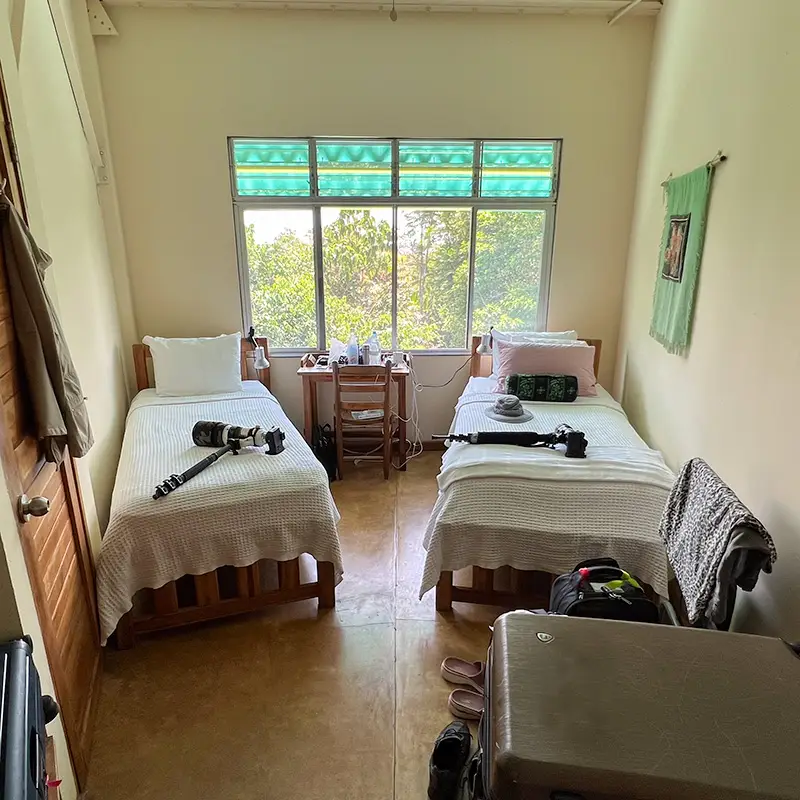
After lunch our group set off for the Gamboa Rainforest Reserve to the northwest of the tower (‘A’ on the map above). The reserve has an excellent network of trails that weave through forested areas and more open sections. The top birds we saw were Yellow-throated Toucan, Golden-hooded Tanager, Slaty-tailed Trogon and Crimson-backed Tanager. A Prothonotary Warbler, a bird we knew well from trips to the USA, searched for food on the ground, while a Three-toed Sloth looked down from a tree.

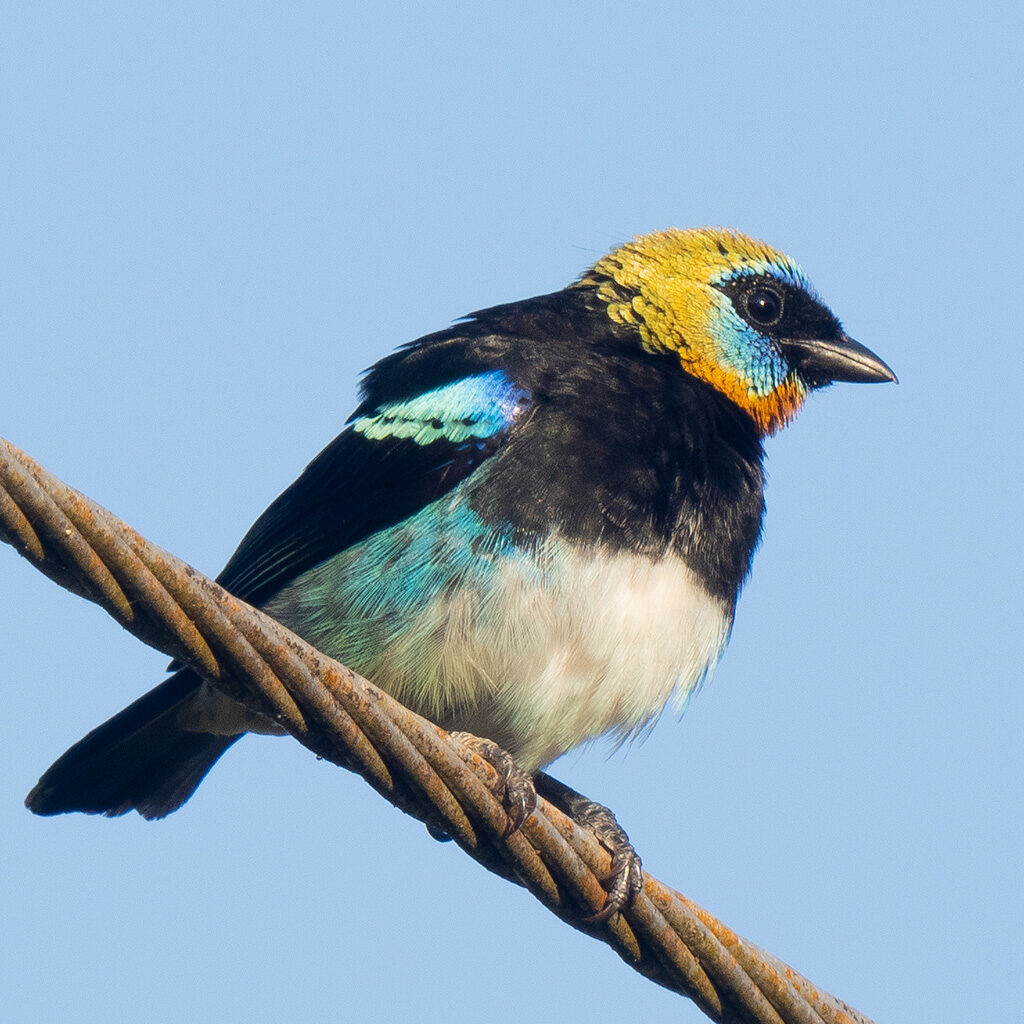
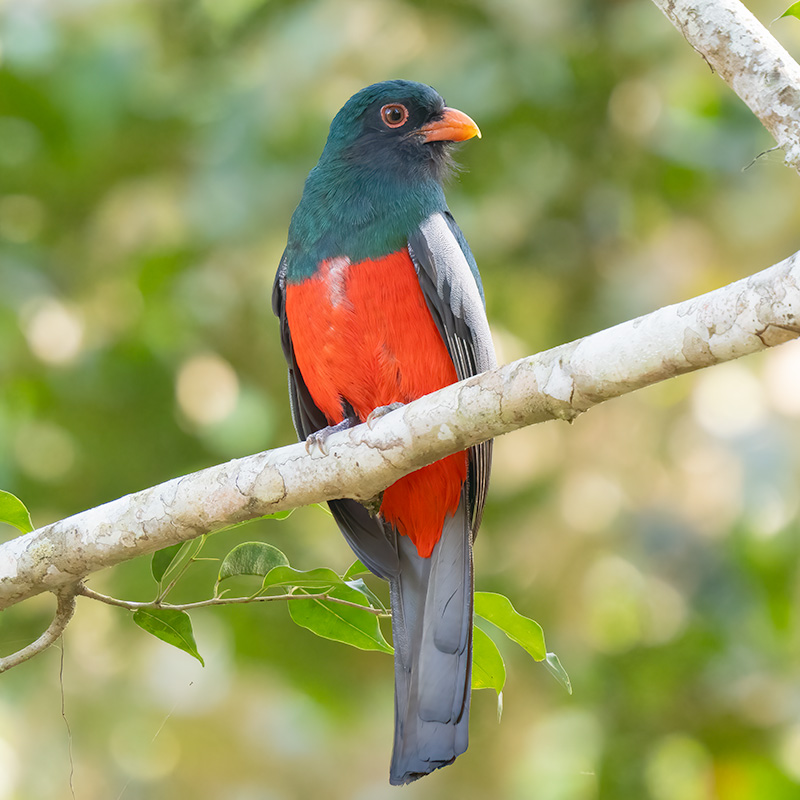
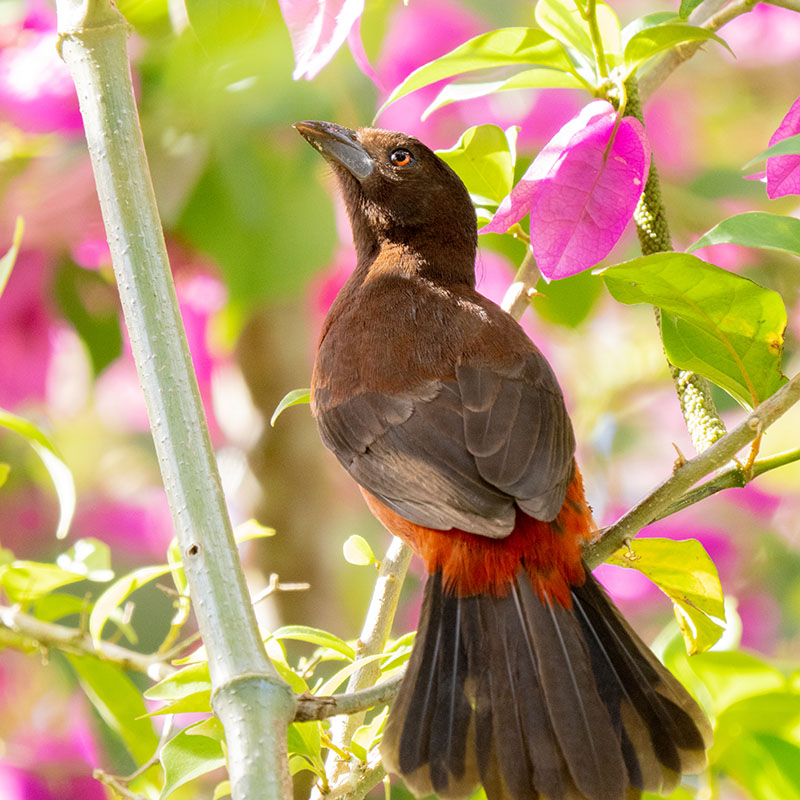
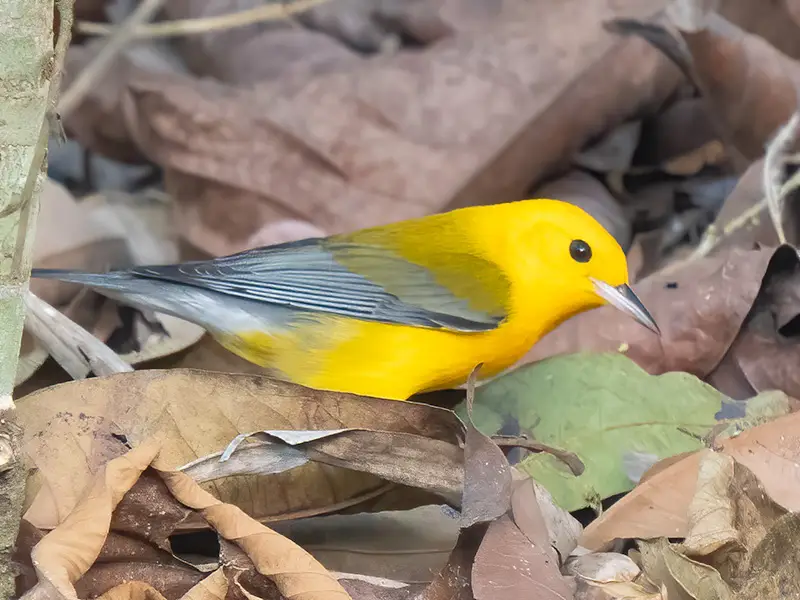
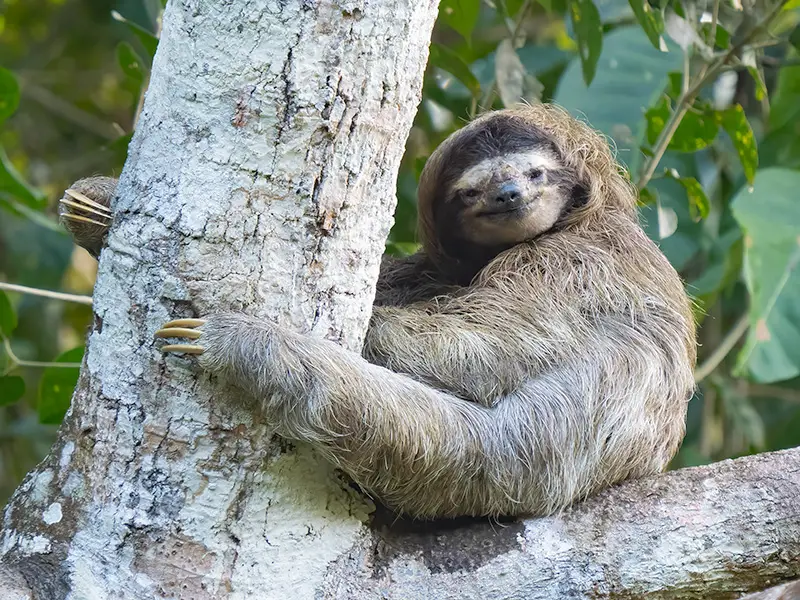
It’s the norm at Canopy Tower to be up on the observation deck at the top of the tower soon after dawn to do some pre-breakfast birding when the birds are very active. The view is spectacular and you can even see large vessels in the distance passing through the Panama Canal.
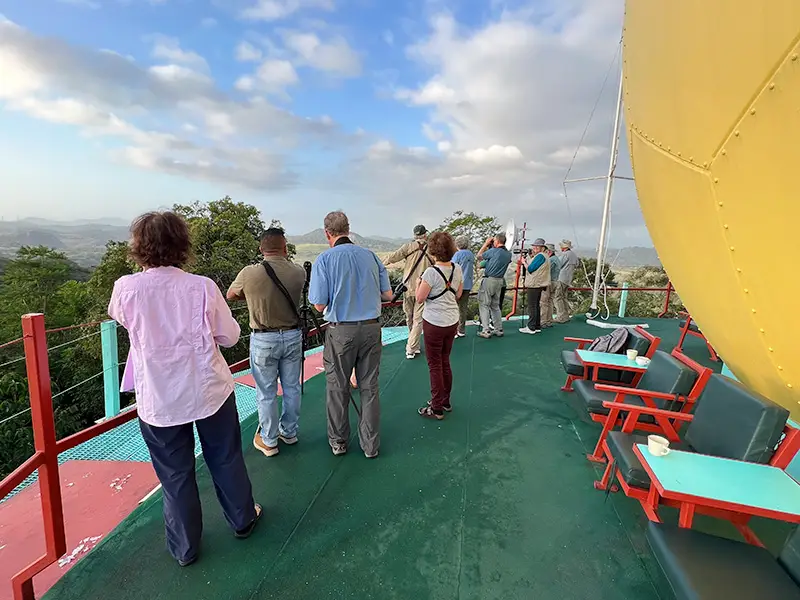
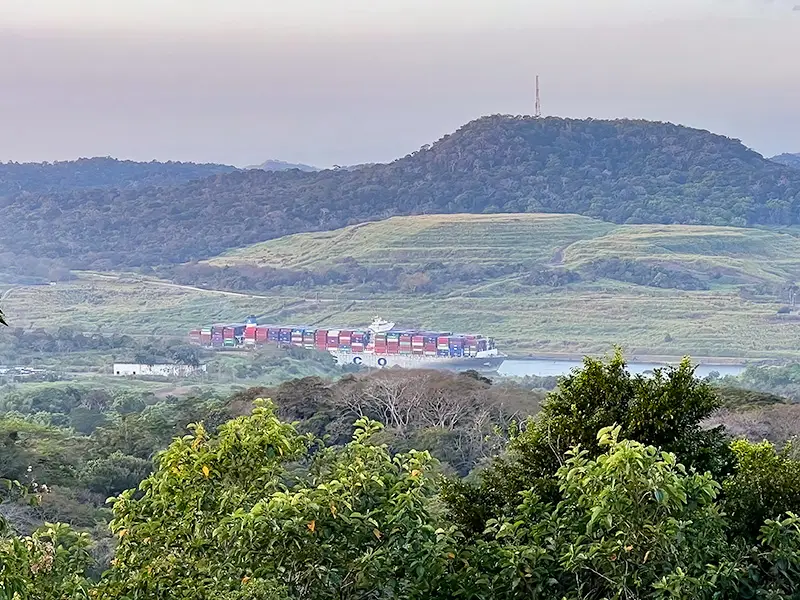
Canopy Tower is on the top of Semaphore Hill and the steep one-mile road up to the top provides some excellent birding, plus the chance to see other animals. On 20 February our group spent the morning slowly walking down the road led by one of the tower guides. There were excellent photographic opportunities as the birds were so close and we got good shots of Black-throated and White-tailed Trogon, and a Golden-crowned Spadebill was a ‘lifer’ for us.
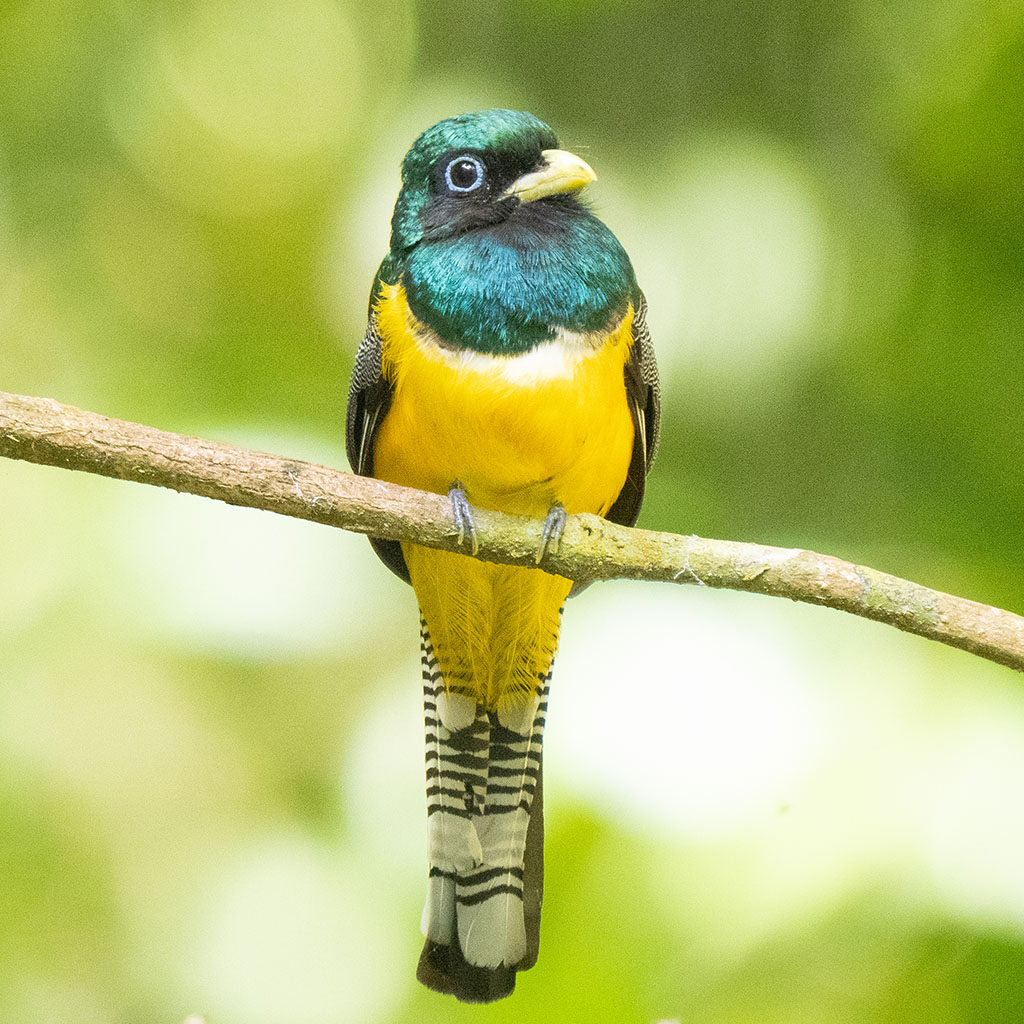

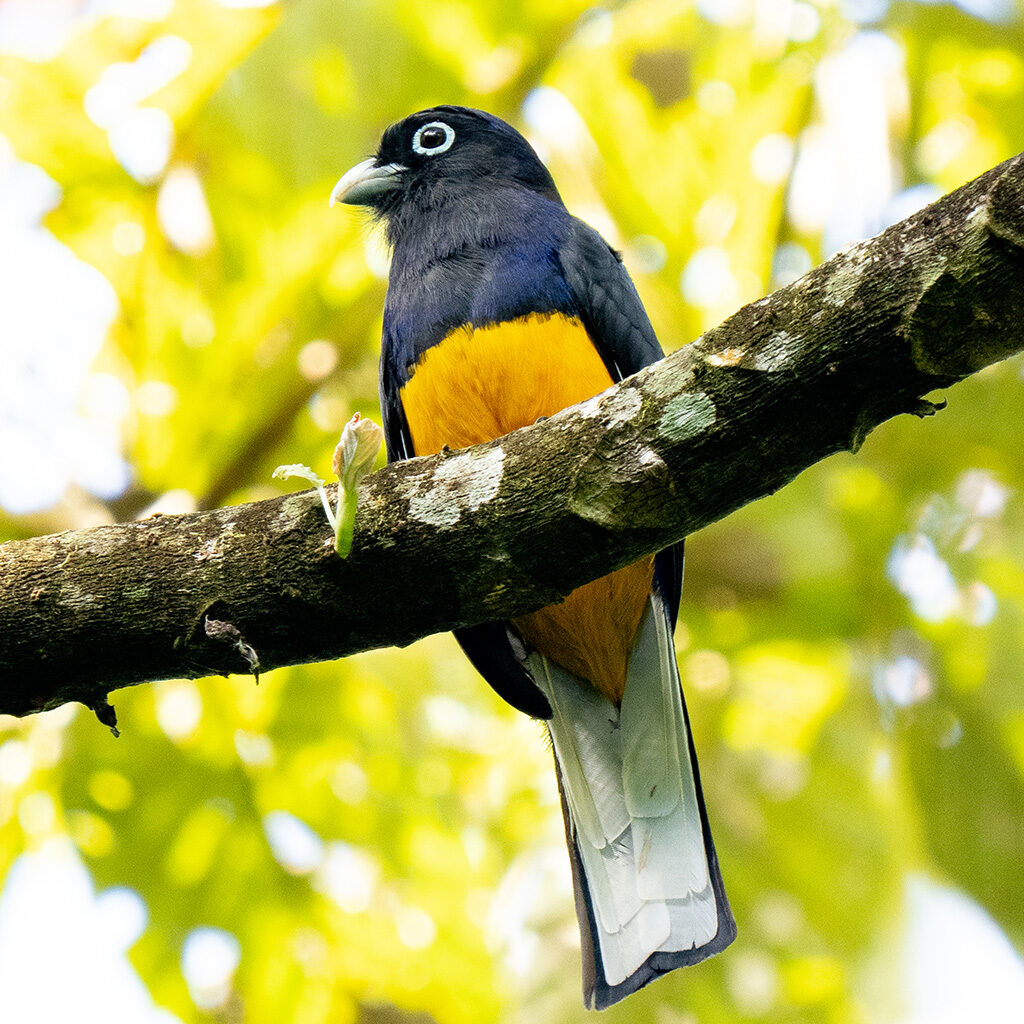
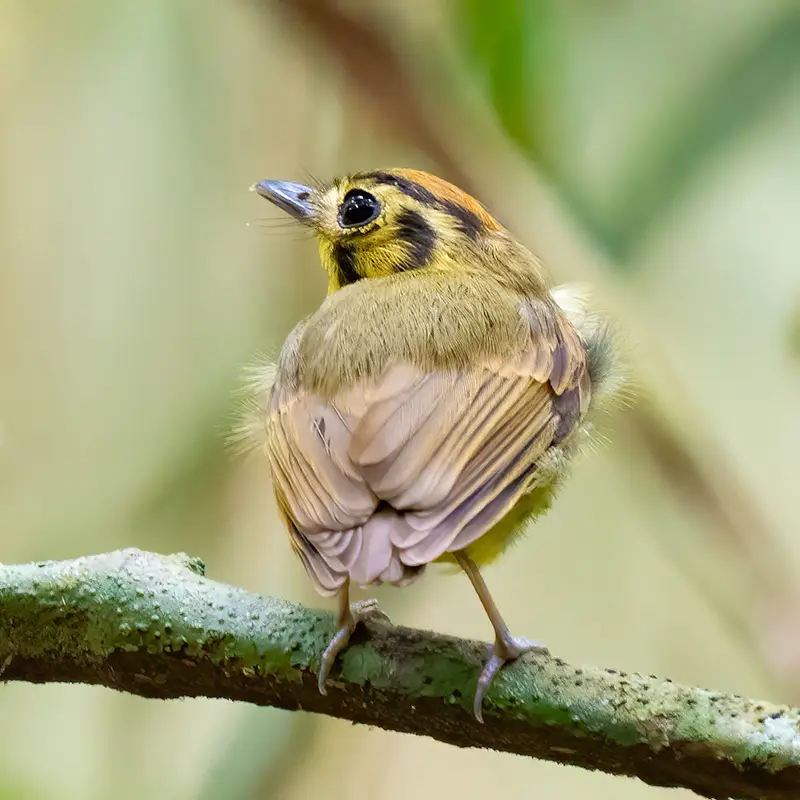
Beside the road we saw a Northern Tamandua, a species of anteater, and a Three-toed Sloth. At first we thought the orange mark on the back of the sloth was a wound, but this is a feature of all these sloths.
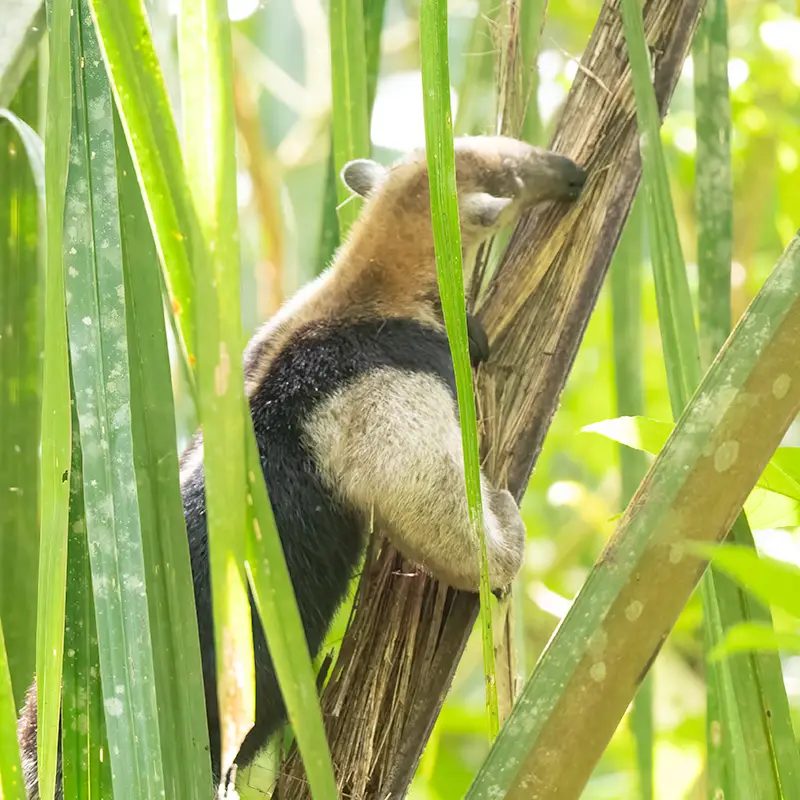
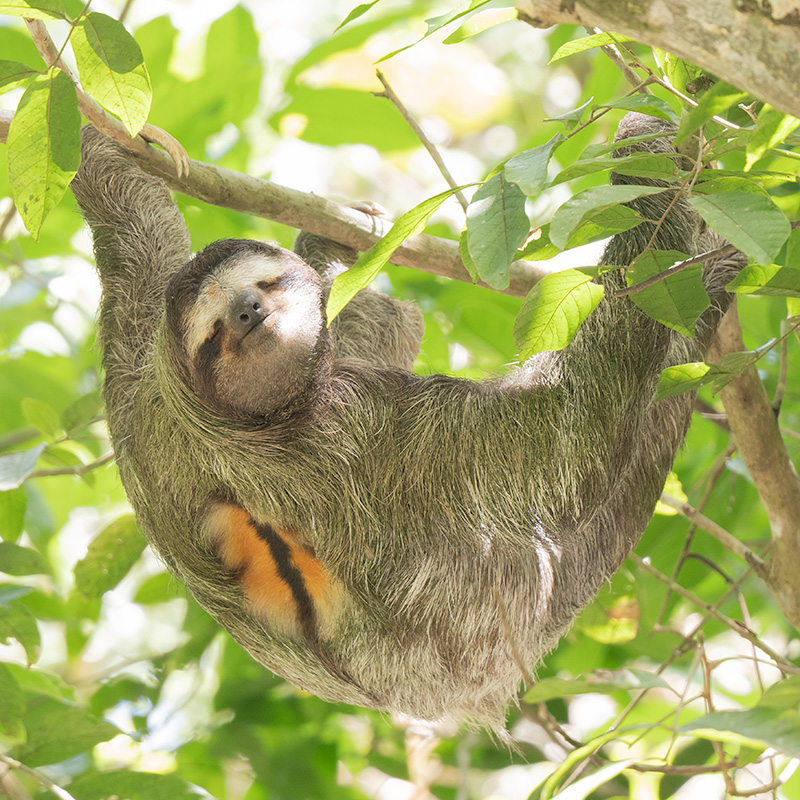
In the afternoon we visited the Ammo Dump Ponds (‘B’ on the map), another well-known birding destination in Panama. As it’s name implies, this site has a military origin in WW II, when water was stored in these ponds in case it was needed to fight fires in the ammunition dumps located close to the canal. Today the ponds are next to a site used by officials who administer the canal and who seem very tolerant of the many birders who congregate there. The ponds attract many waterbirds and we photographed Purple Gallinule, Wattled Jacana and Rufescent Tiger-heron. At the water’s edge we saw a Caiman.
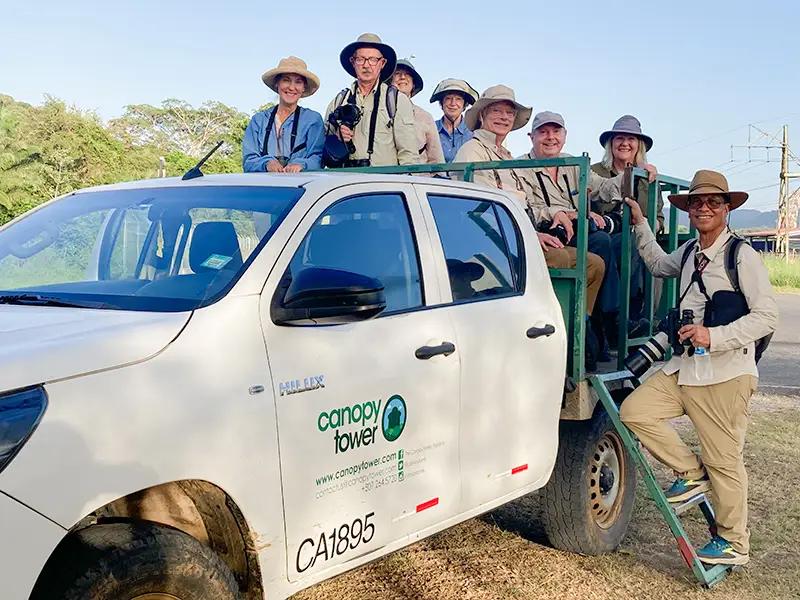
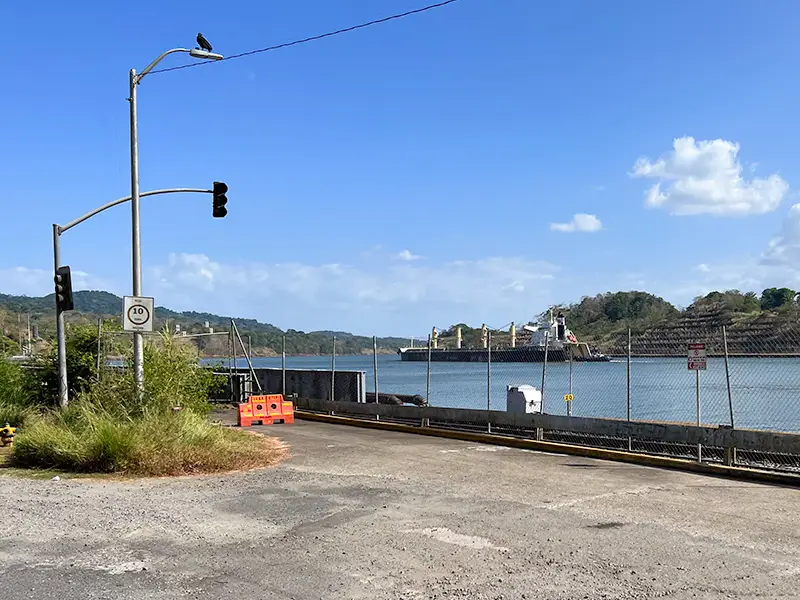
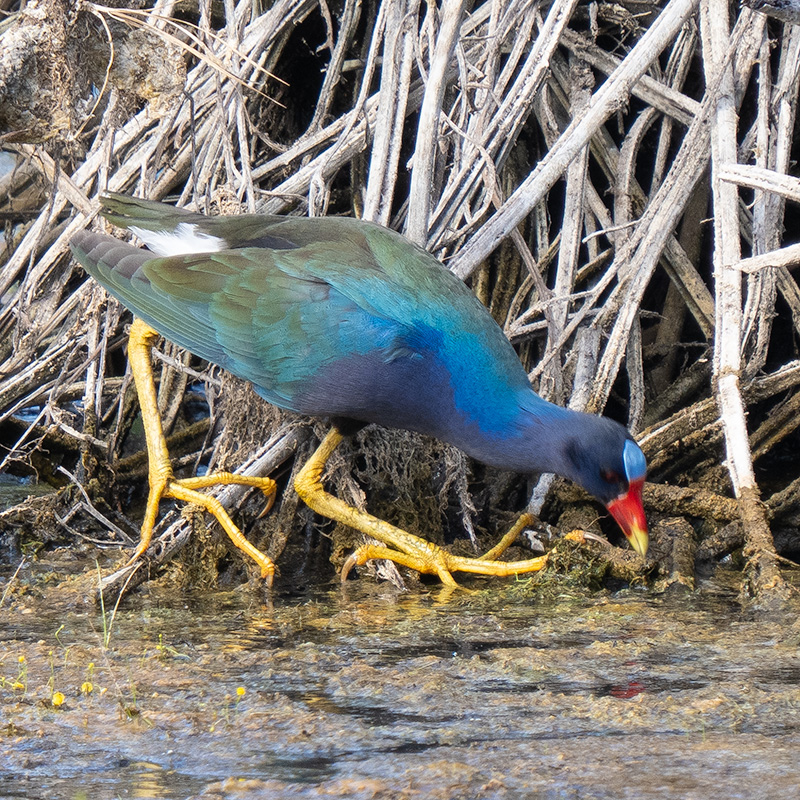
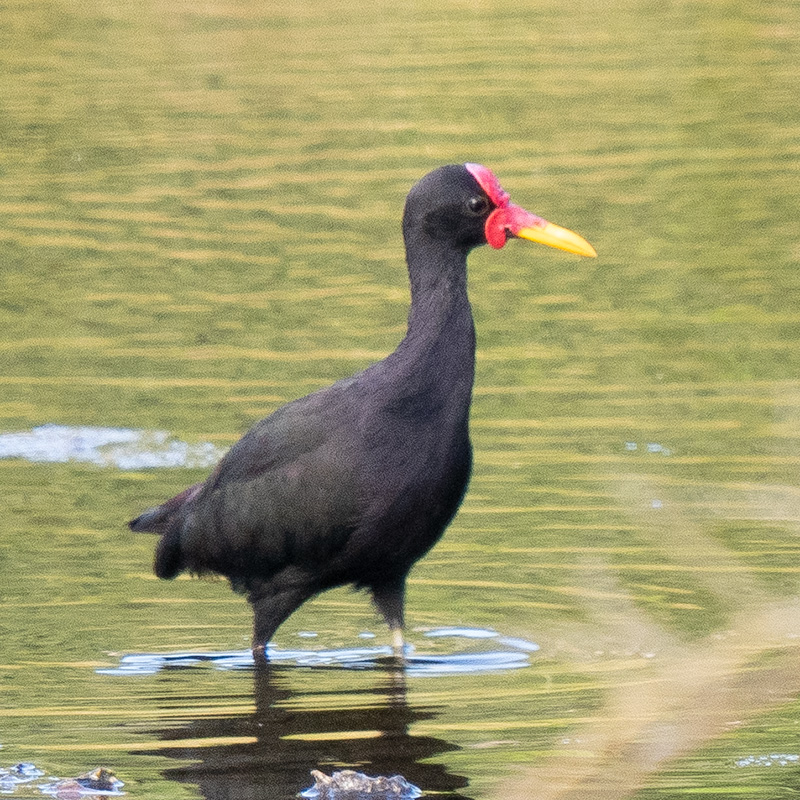
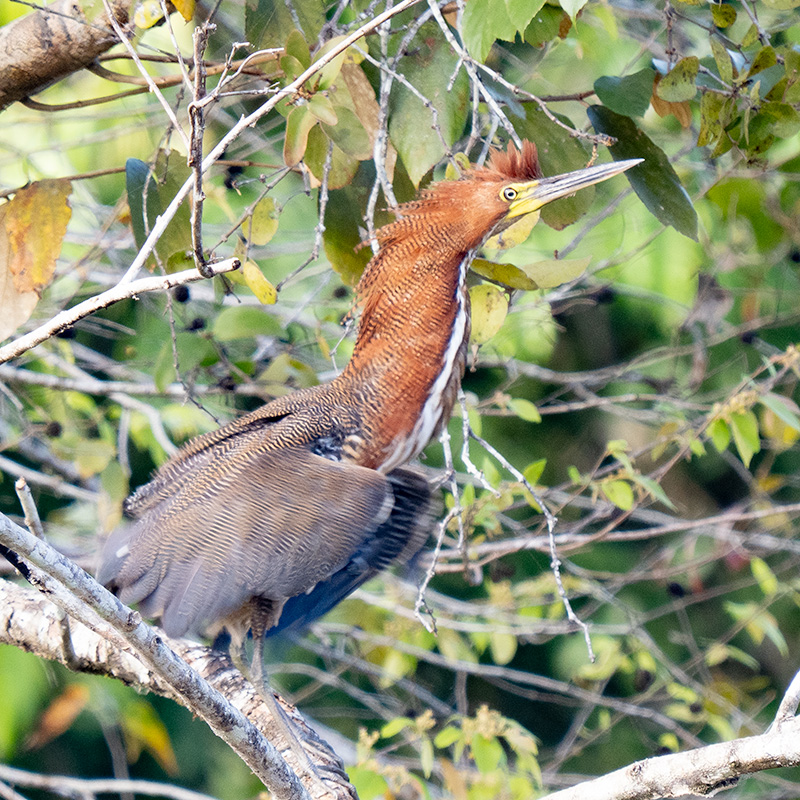

Close to the ponds we saw Lesser Kiskadee and Yellow-bellied Seedeater, both of which were lifers for us. Also Orange-chinned Parakeet, Yellow-tailed Oriole and Orchard Oriole.
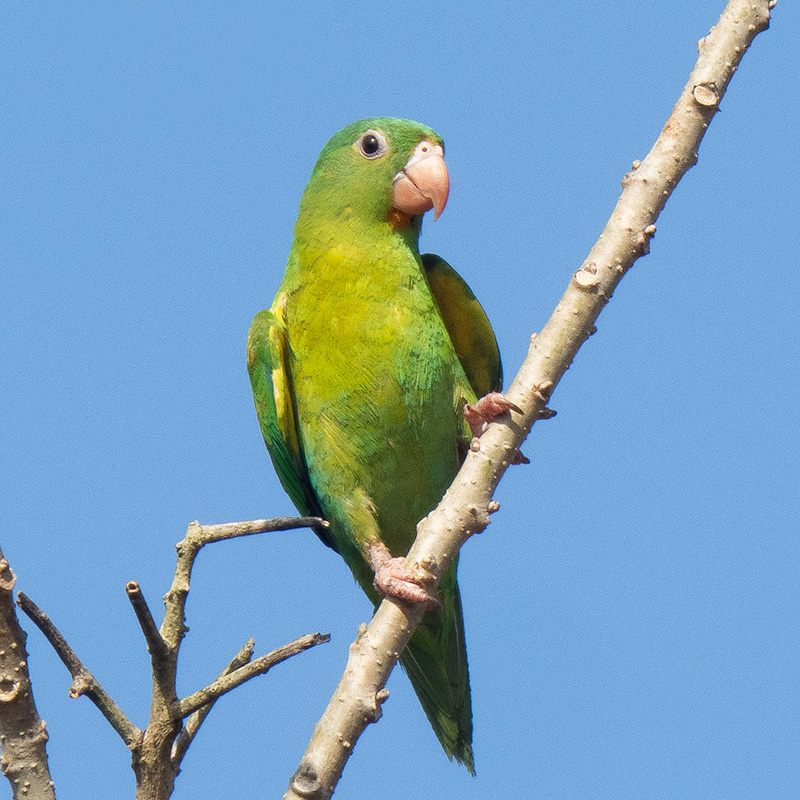
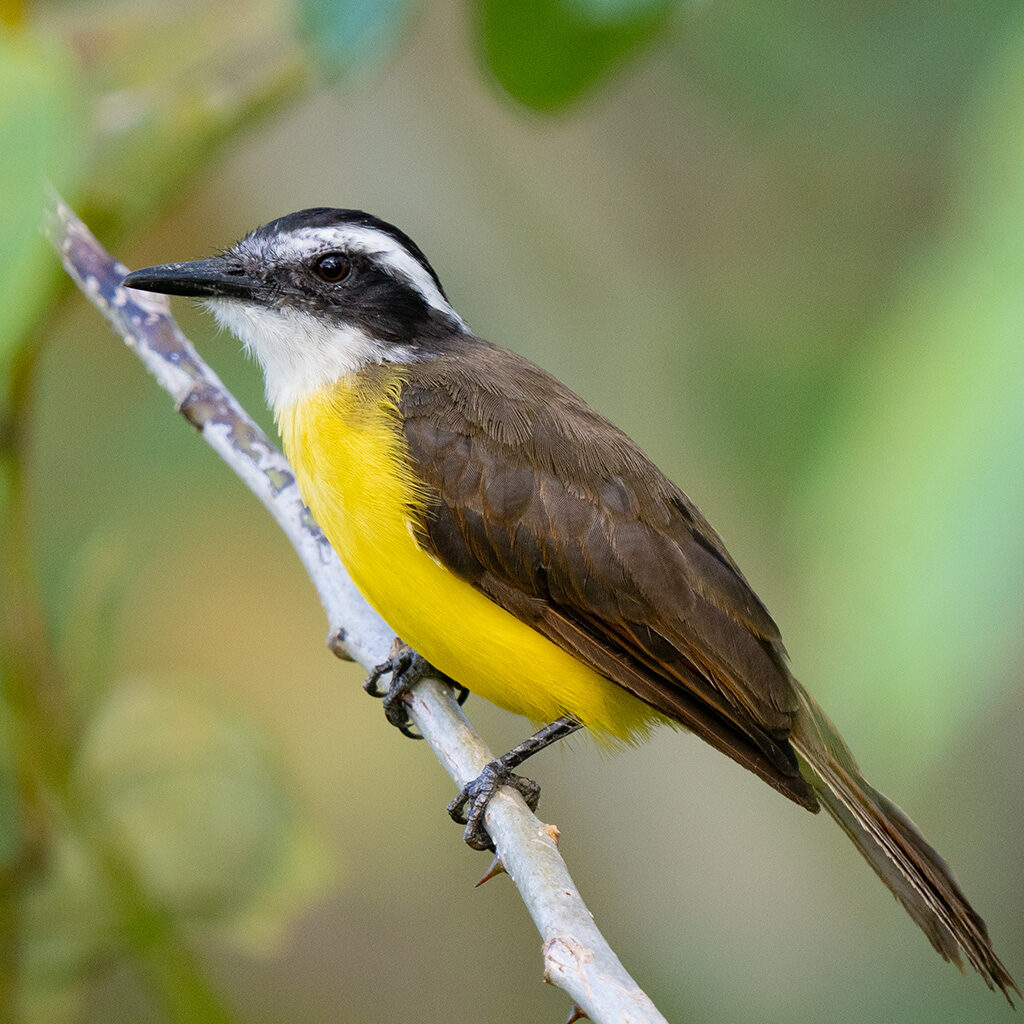
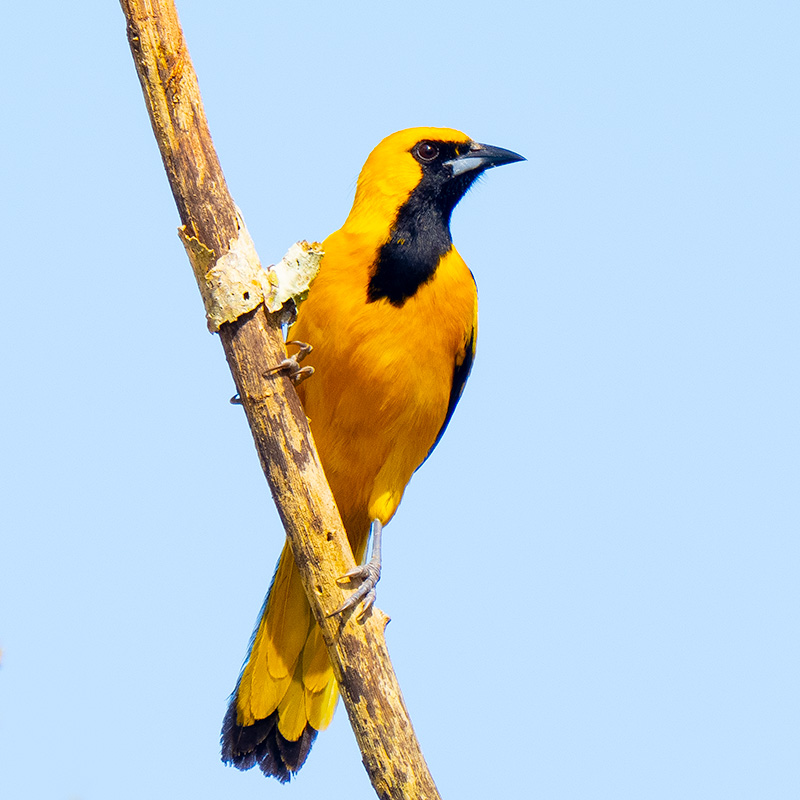
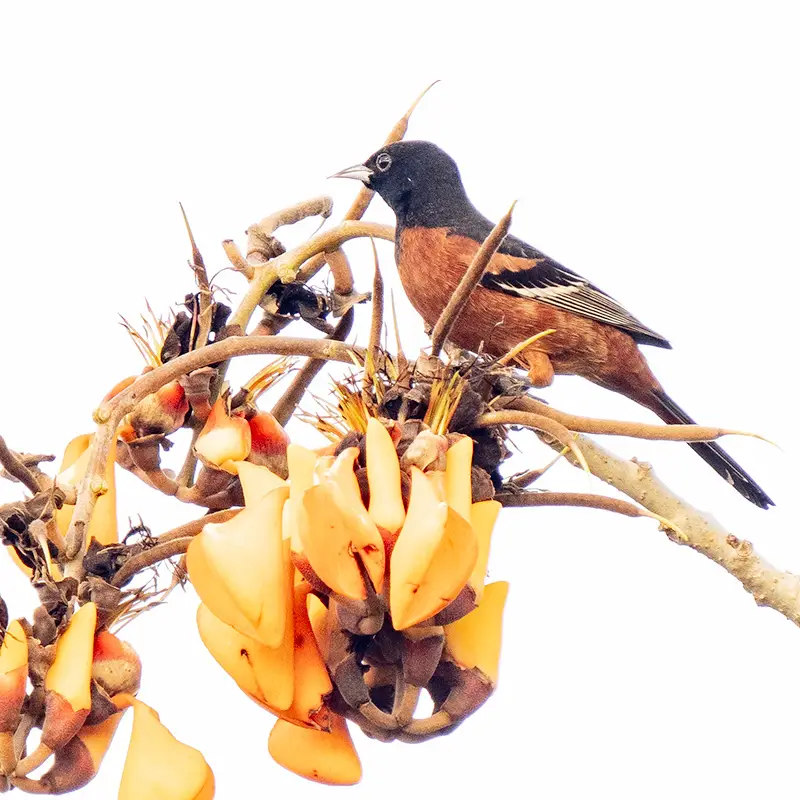
During the morning of 21 February we visited another famous birding site – the Pipeline Road (‘C’ on the map). This is a single-lane service road for a pipeline built during WW II that crossed the isthmus of Panama, providing a means of transferring fuel between sites near the Atlantic and Pacific Oceans. Despite all the work involved in constructing the pipeline, it was never used, but today the road provides a means of observing the remarkable fauna and flora found in the Soberania National Park.
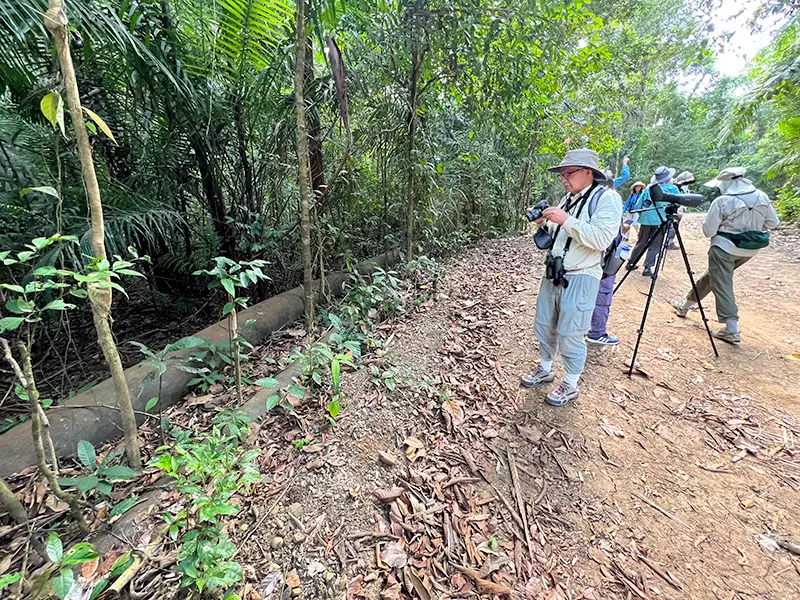
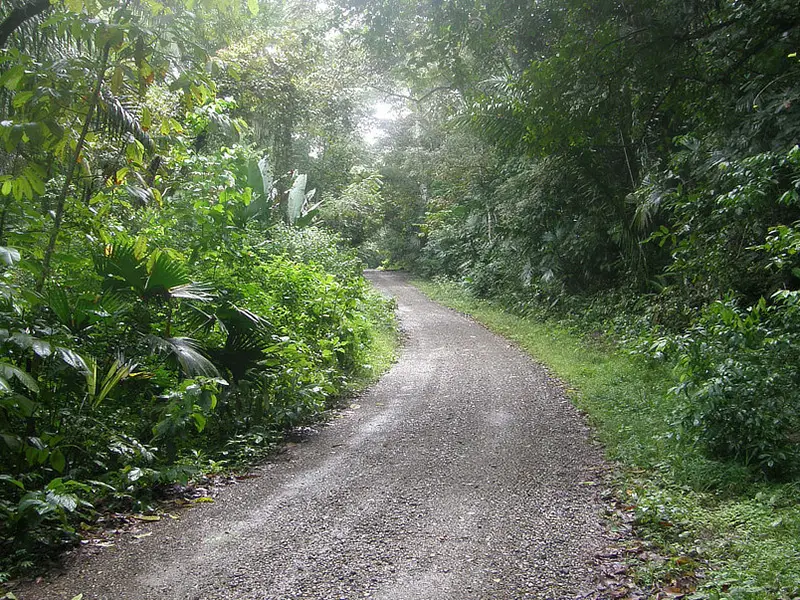
Vehicles are not allowed along much of the road so we parked near the start and birded the first few kilometres during the morning. As expected, we saw a lot of birds, with early highlights being Grey-headed Tanager, Black-crowned Antshrike and Black-breasted Puffbird.
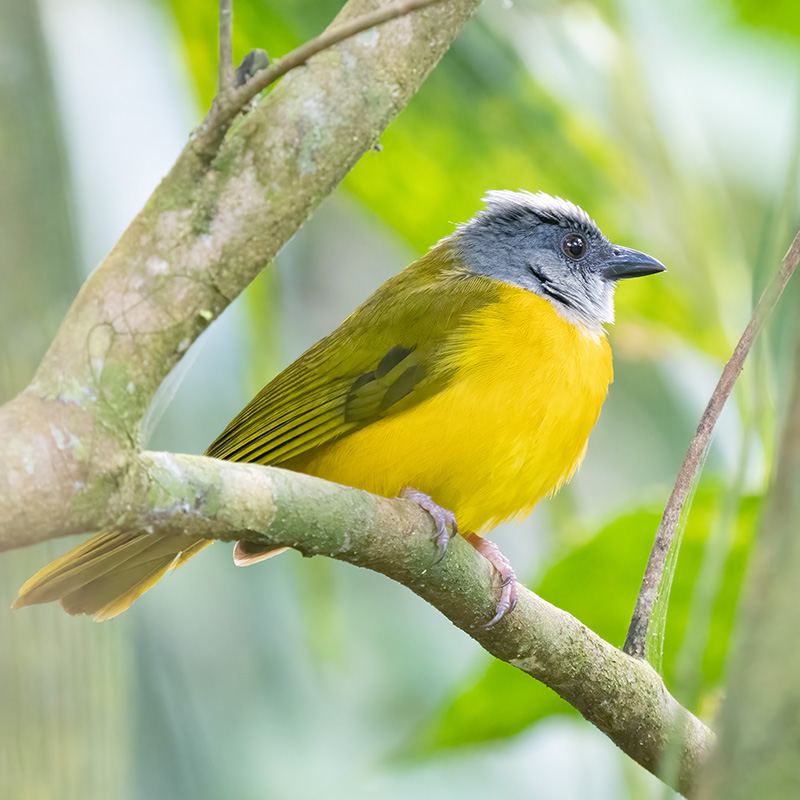
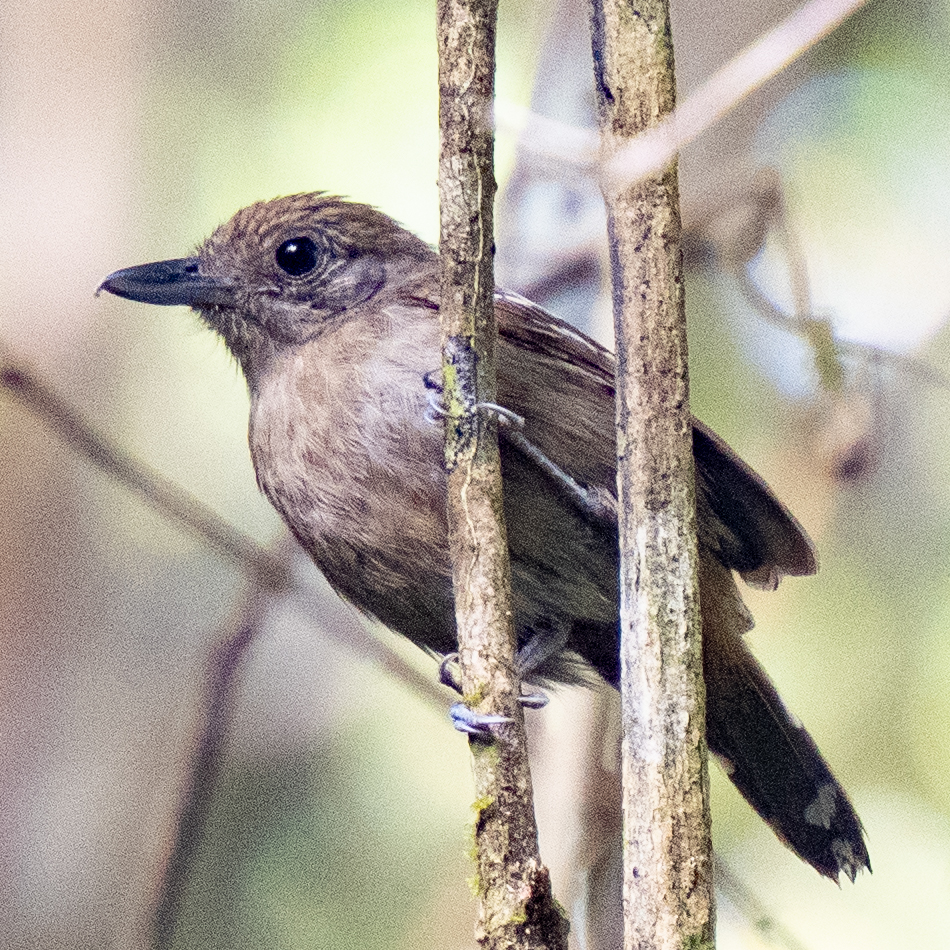
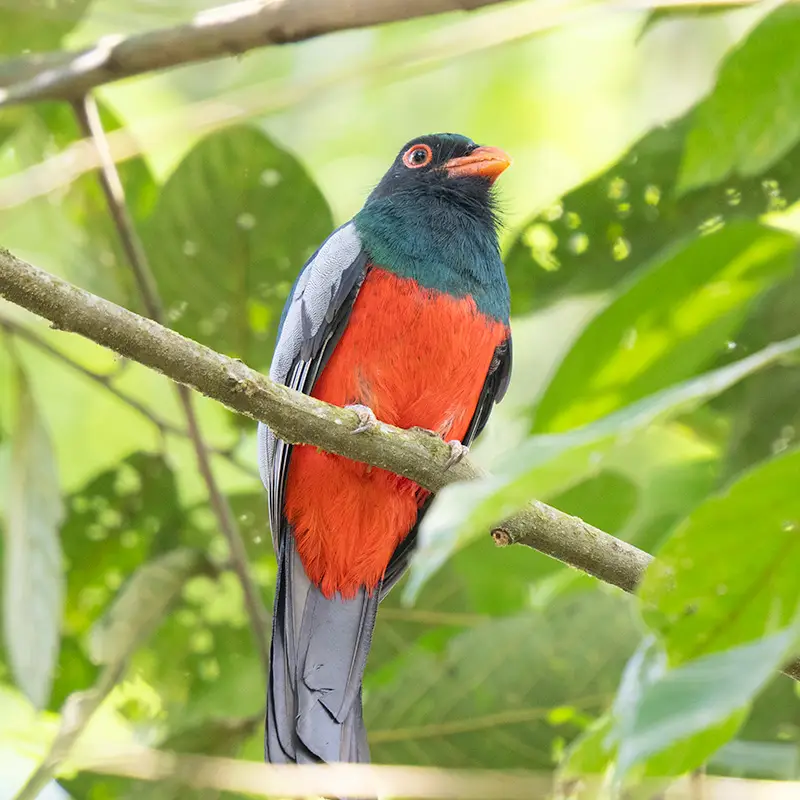
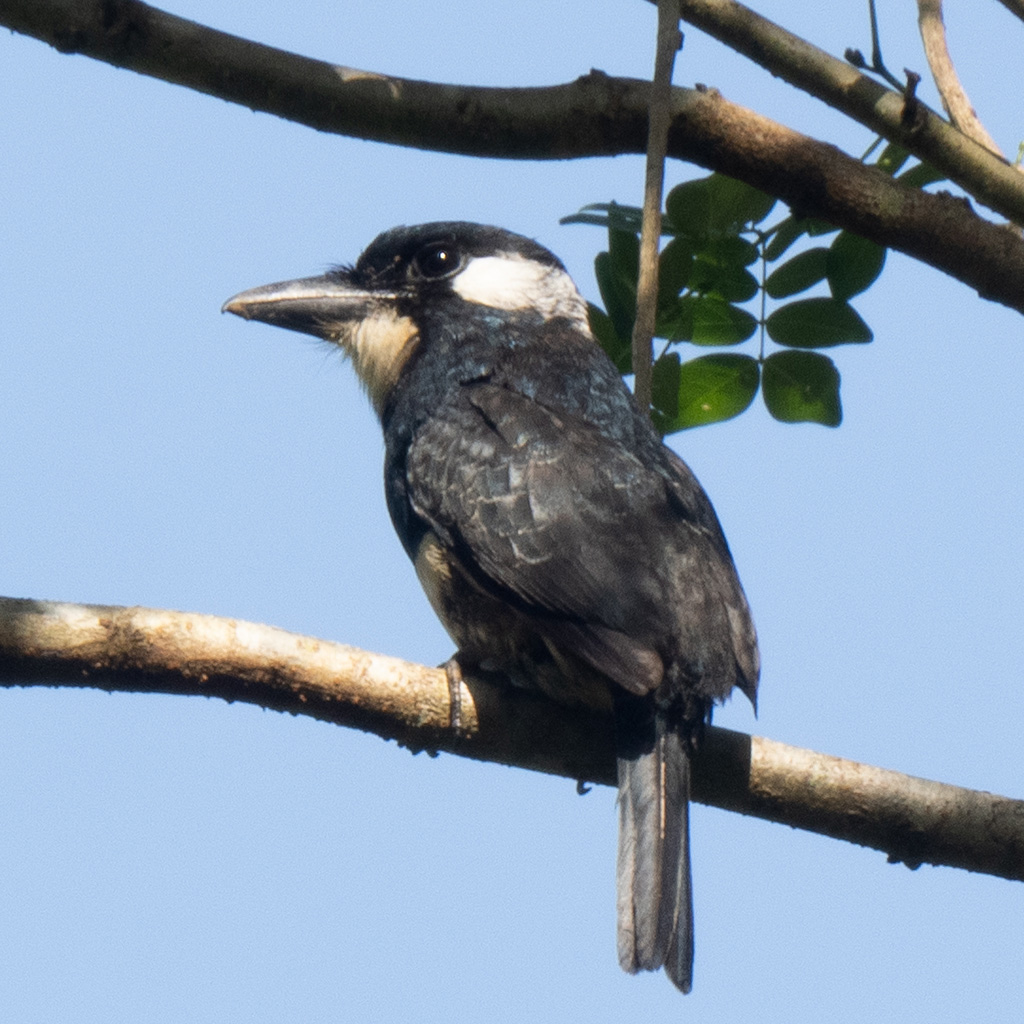
Raptors were flying over and even though we only had a narrow view of the sky as a result of the tall trees on either side of the road, we still got shots of Plumbeous Kite and Double-toothed Kite
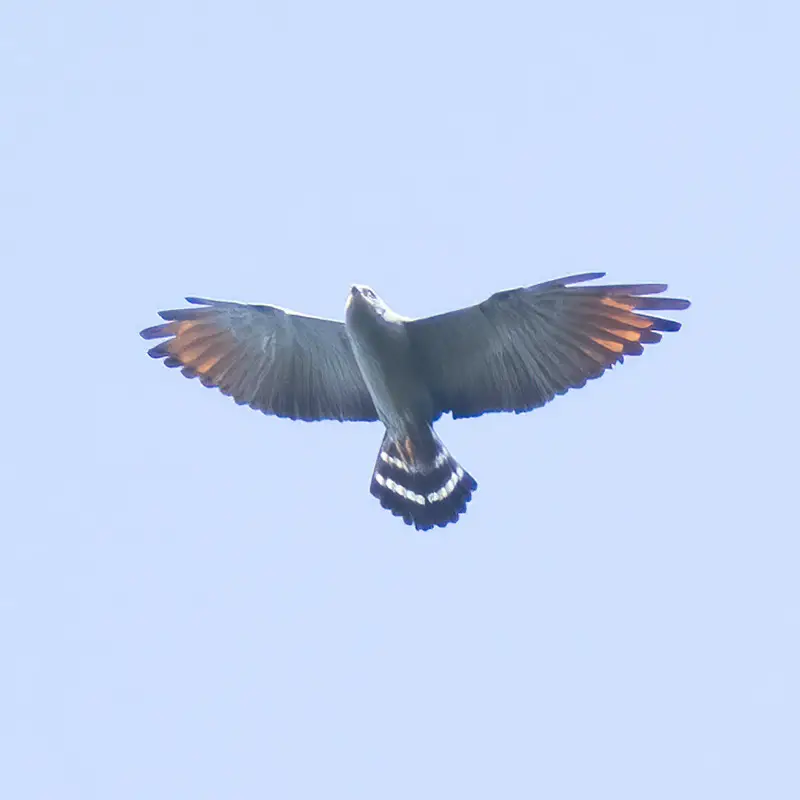
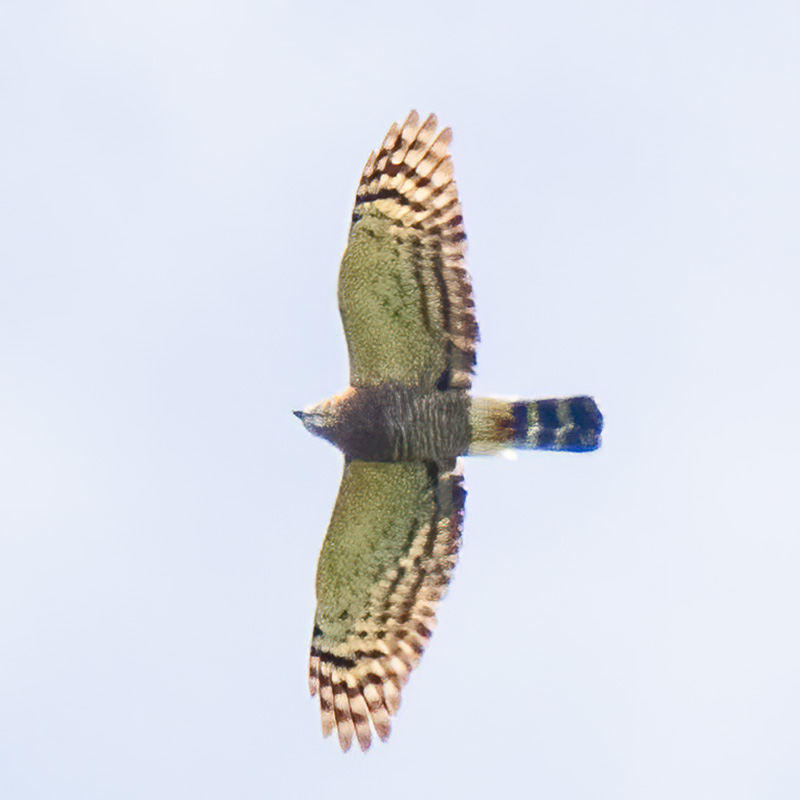
Towards the end of the morning, we came across an ant swarm that was disturbing the insects on the forest floor. This in turn drew in many birds that follow the ants, including Dusky Antbird, Spotted Antbird, Oscellated Antbird, Fasciated Antshrike and Bicoloured Antbird.
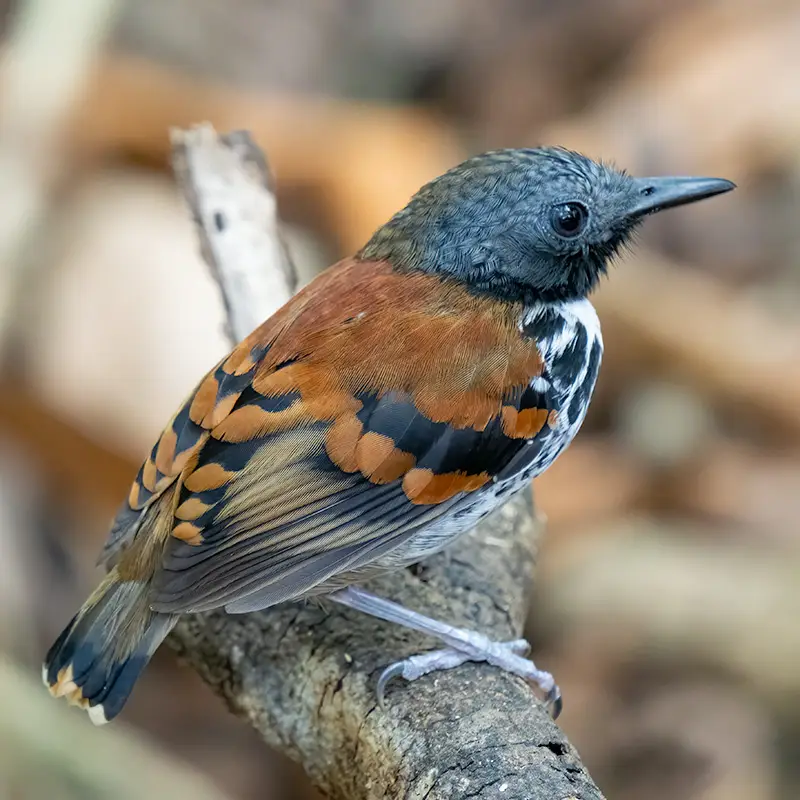
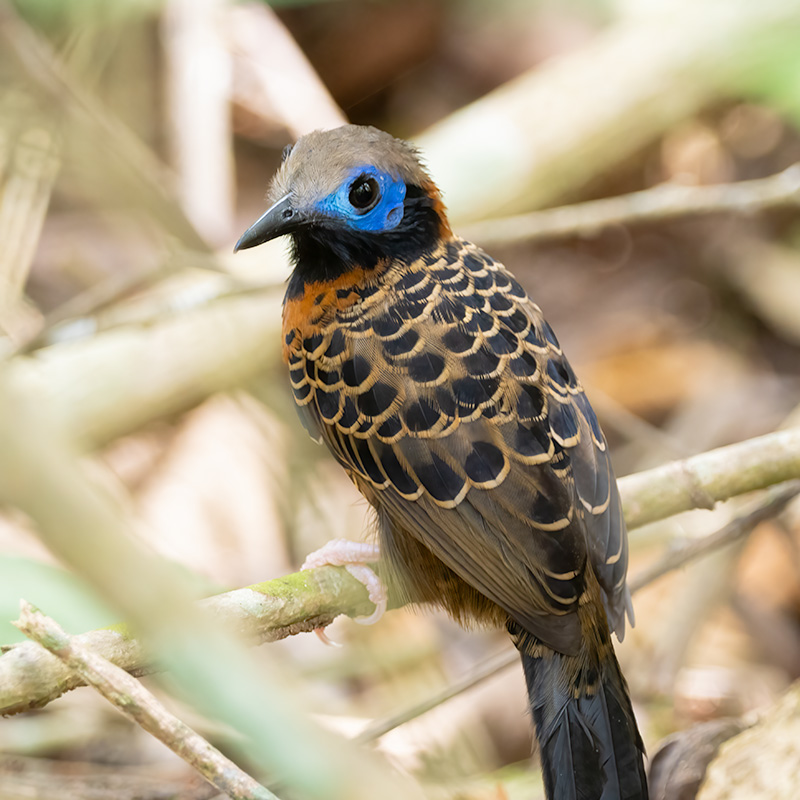

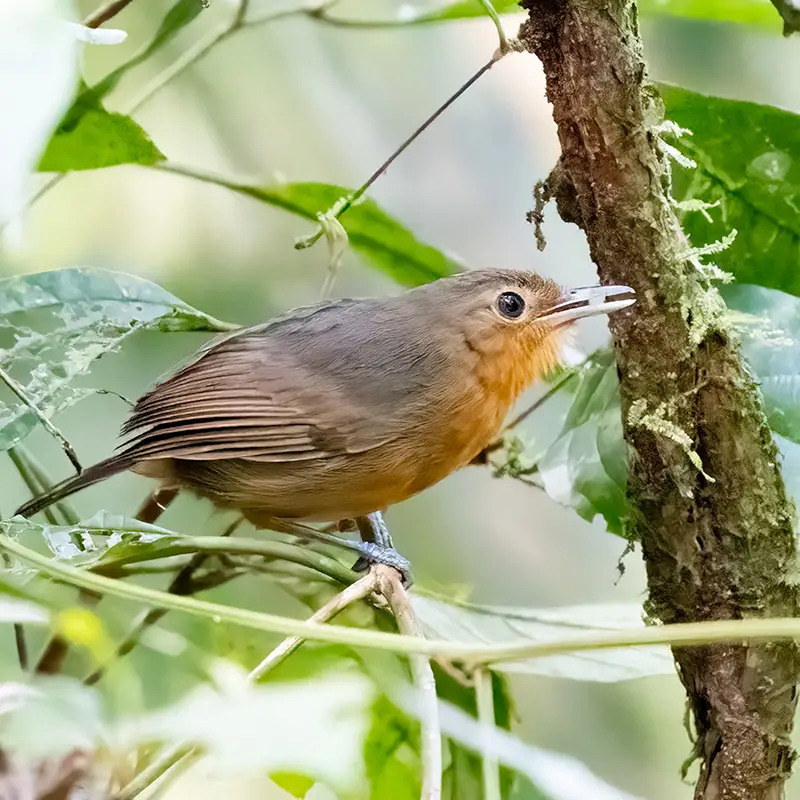
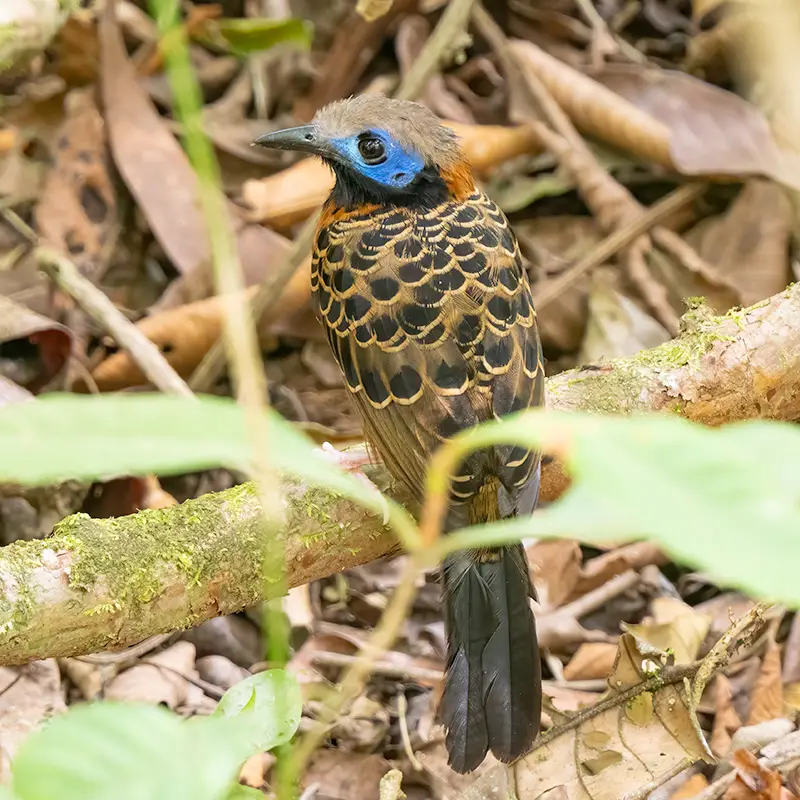
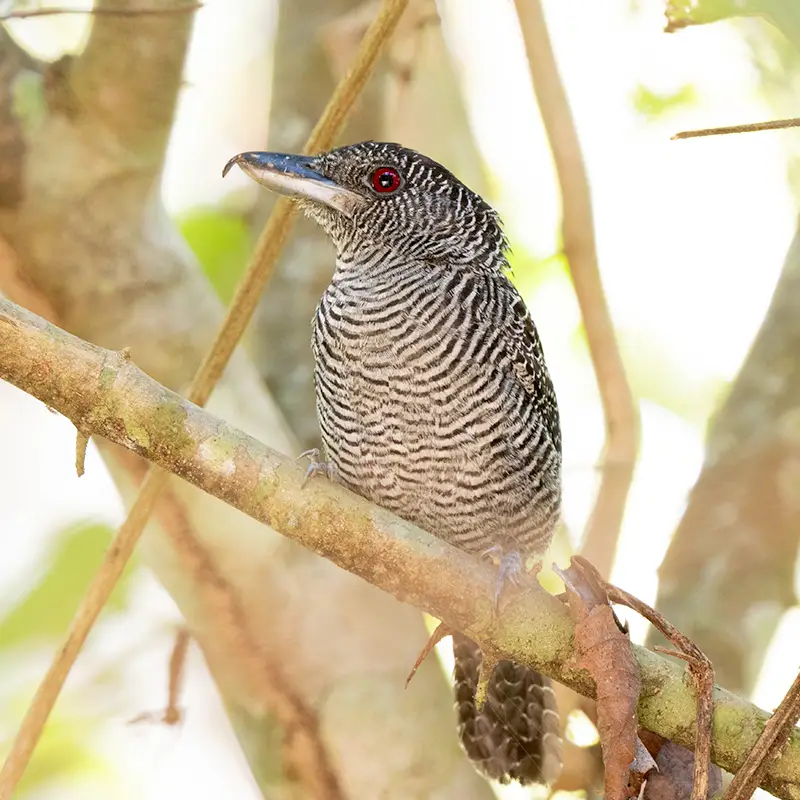
After lunch we made our second visit to the excellent Gamboa Rainforest Reserve just to the north of the Panama Canal. The trails were as productive as on our first visit and we got some new birds, including Black-tailed Trogon, White-bellied Antbird, and distantly, a Rosy-thrush Tanager.
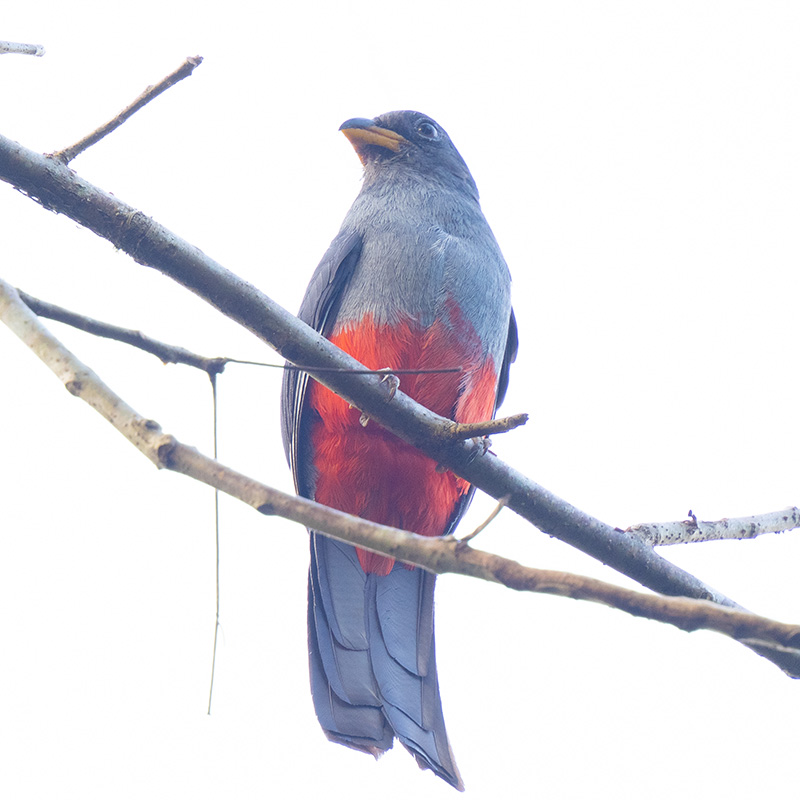
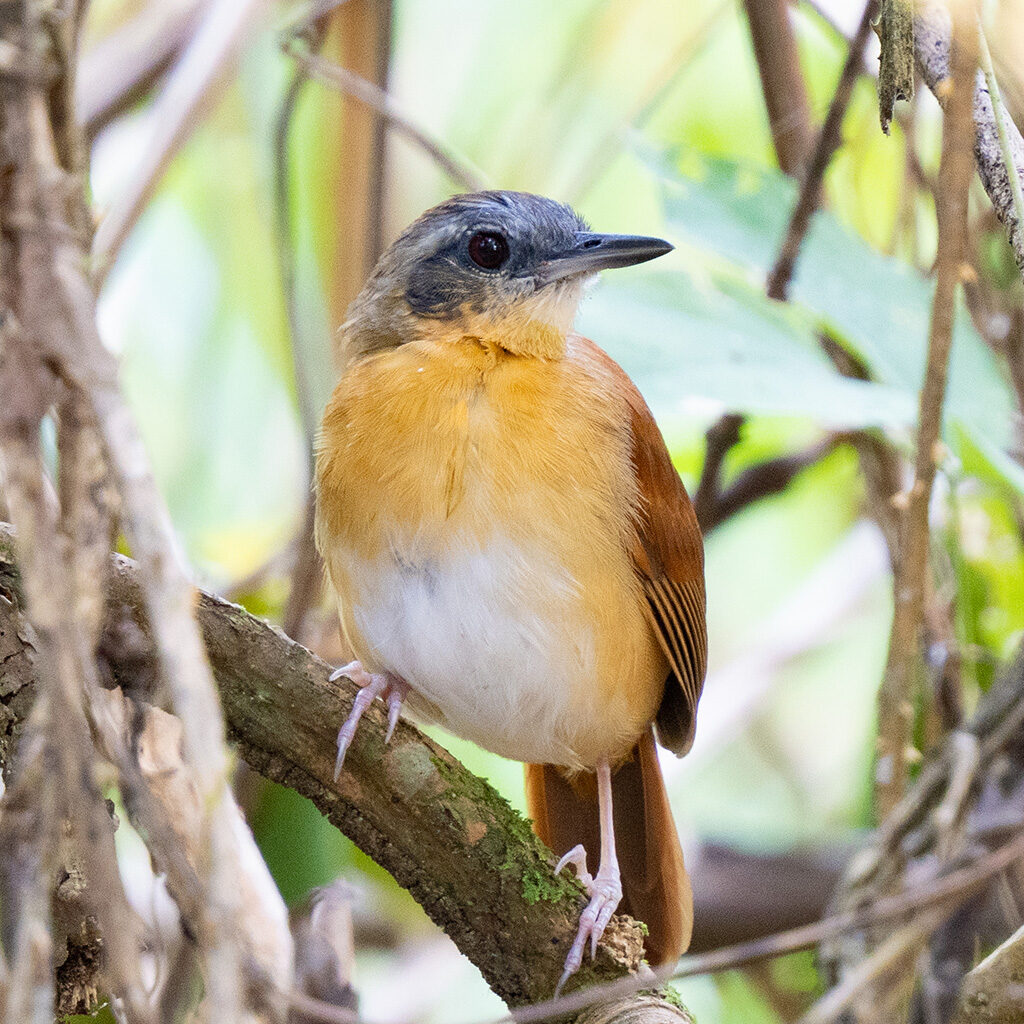
Better photographs were obtained of the stunning Golden-collared Manakin, Yellow-throated Toucan and Ruddy Ground Dove.
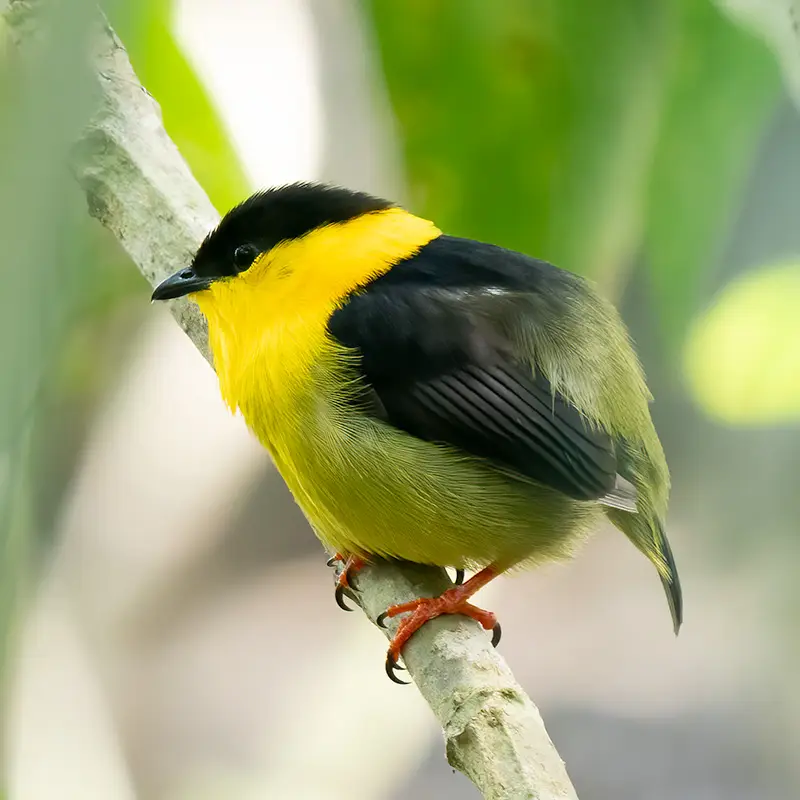
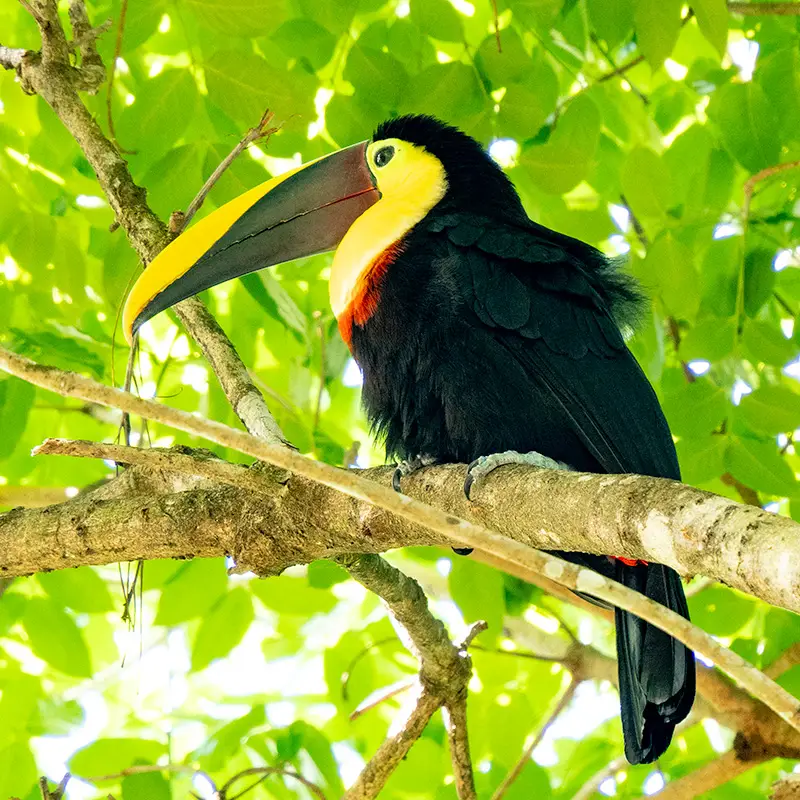

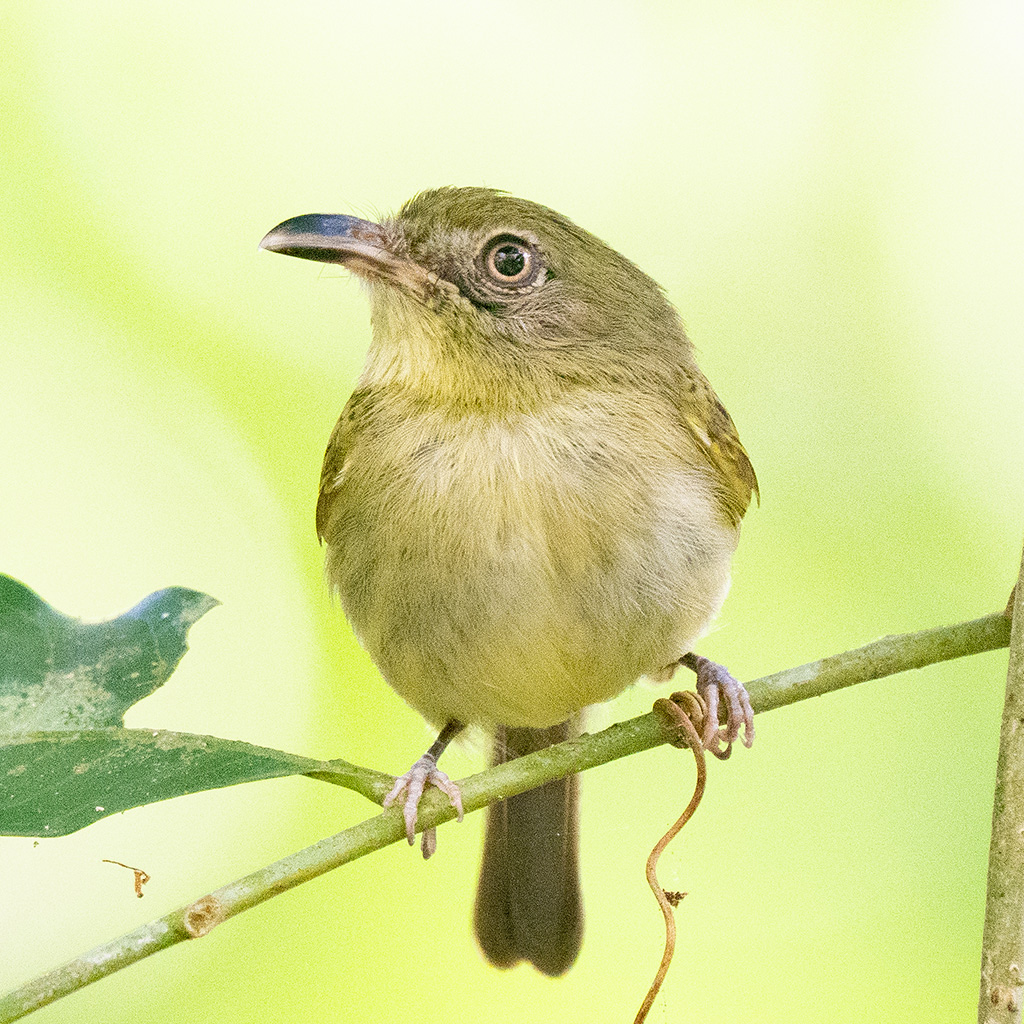
The morning of 22 February was spent birding the Plantation Trail, which is located just north of Canopy Tower off the main road towards the canal.

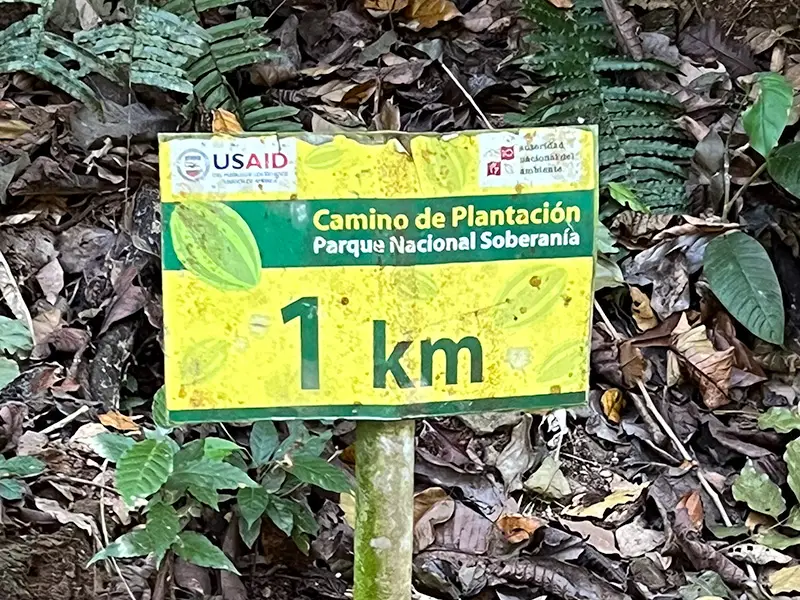
It’s always a pleasure to see toucans and while on the Plantation Trail we had excellent views of a Keel-billed Toucan. We also saw Ruddy-tailed Flycatcher, Brown-capped Tyrannulet, White Hawk, White-flanked Antwren (both male and female) and White-whiskered Puffbird.
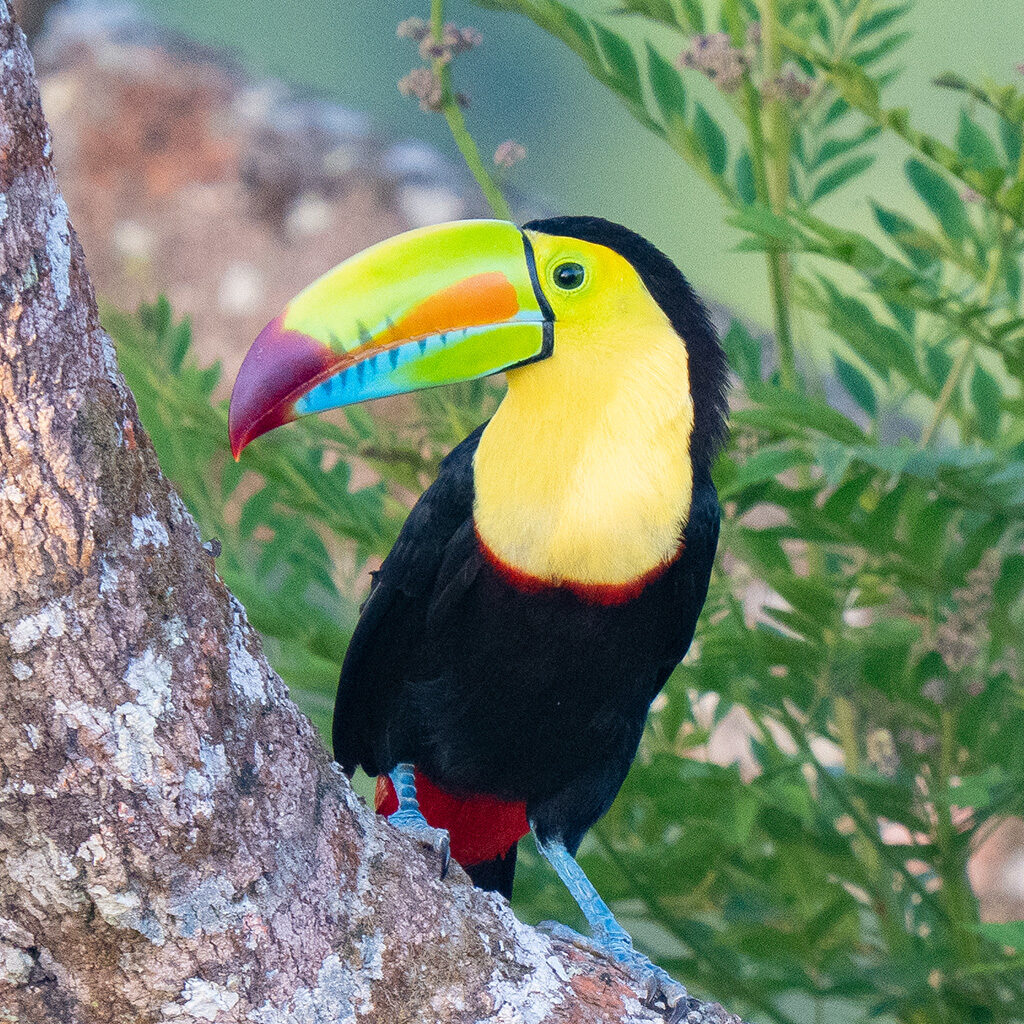

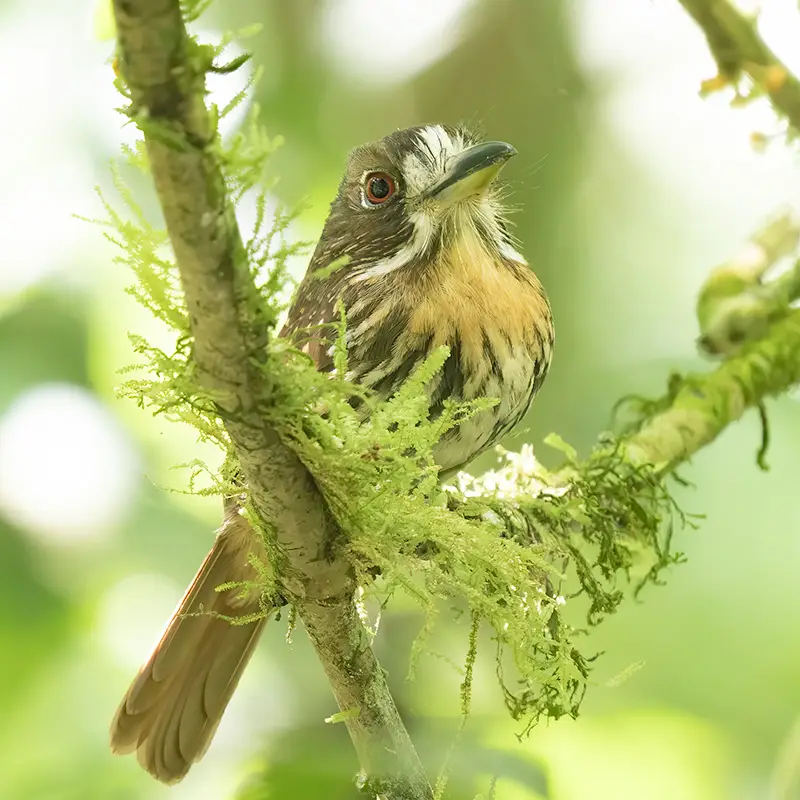
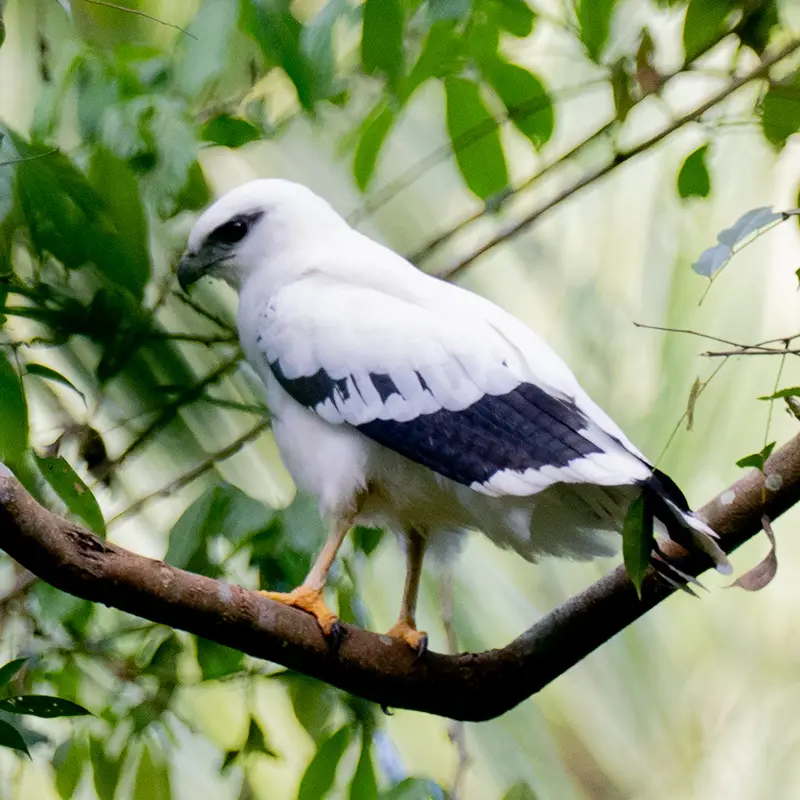
In terms of mammals, we saw Panamanian White-faced Capuchin and South American Coati.


During the afternoon we visited the Parque Municipal Summit, which is very close to Canopy Tower and has large areas of lawn, forested sections and a botanic garden. With such a good range of habitats, we saw a number of interesting birds, including Red-throated Ant-tanager, which has a highlight of the afternoon, Blue Dacnis, Fulvous-vented Euphonia, Blue-headed Parrot, Masked Tityra and Collared Aracari. We also saw a Blue Cotinga, but it was very distant and difficult to photograph.

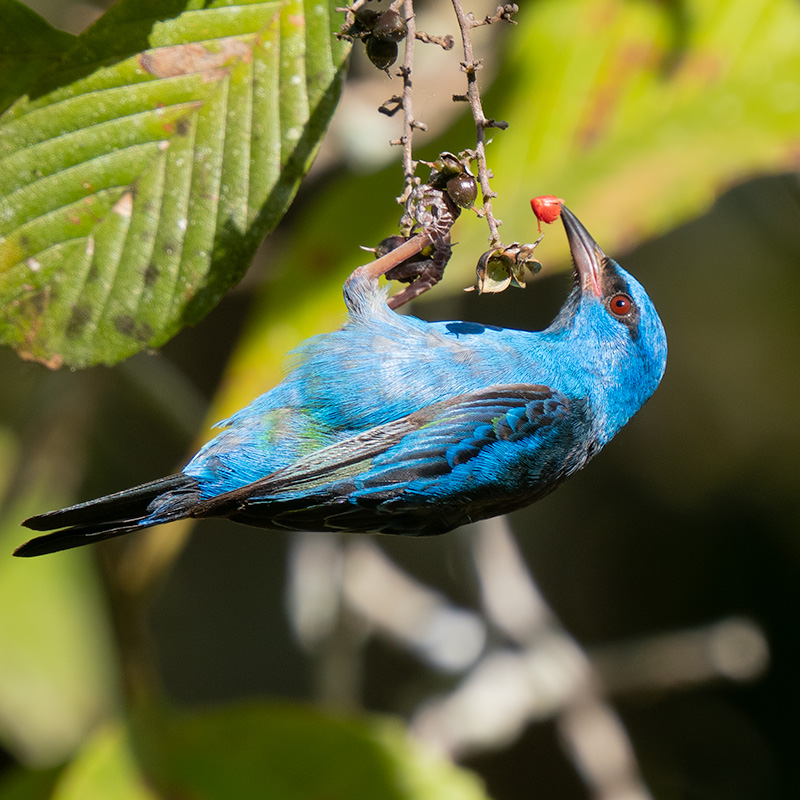
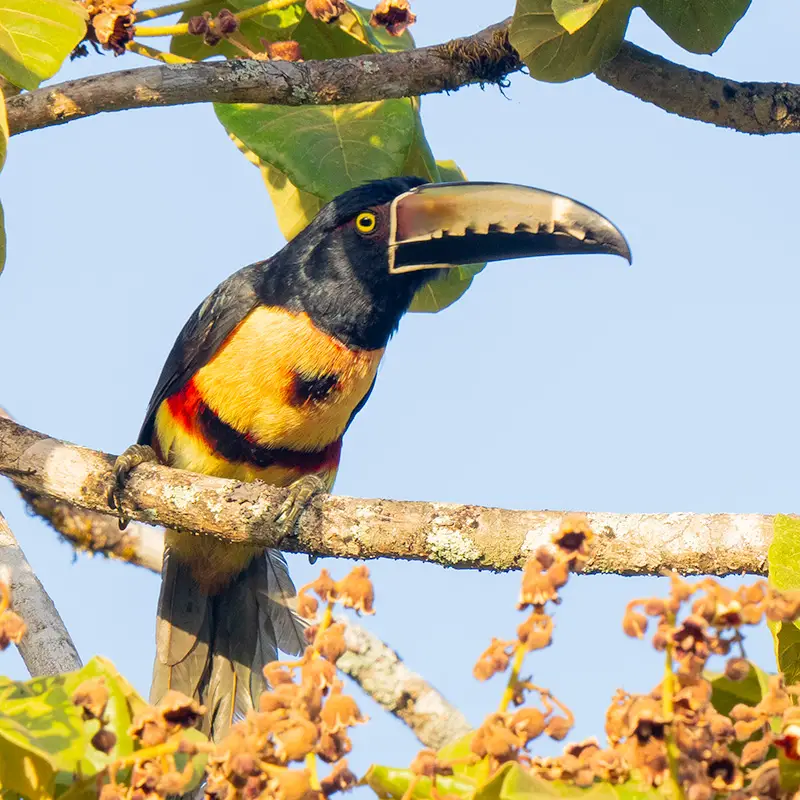

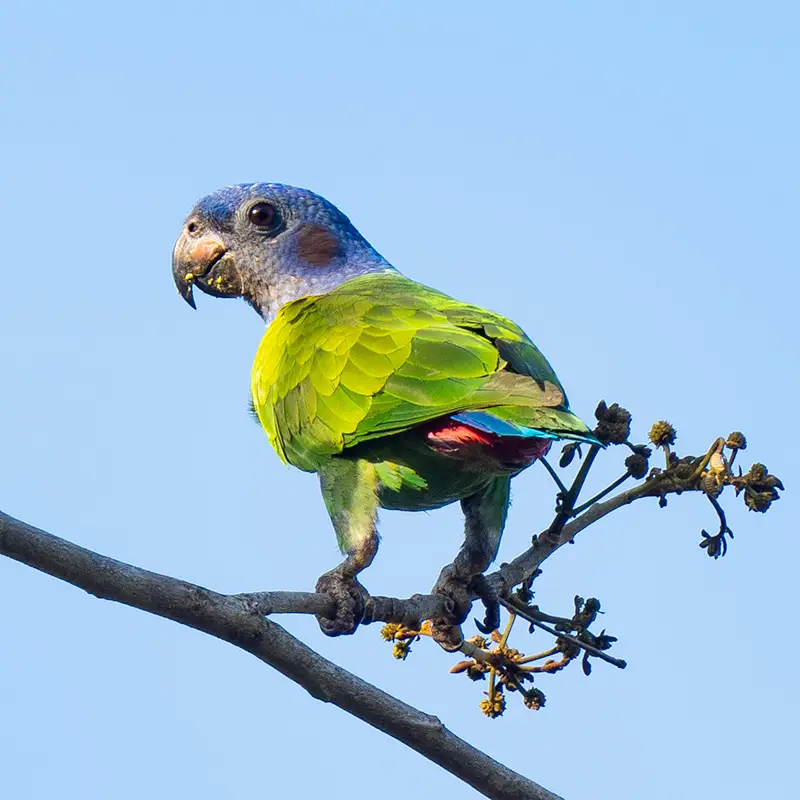
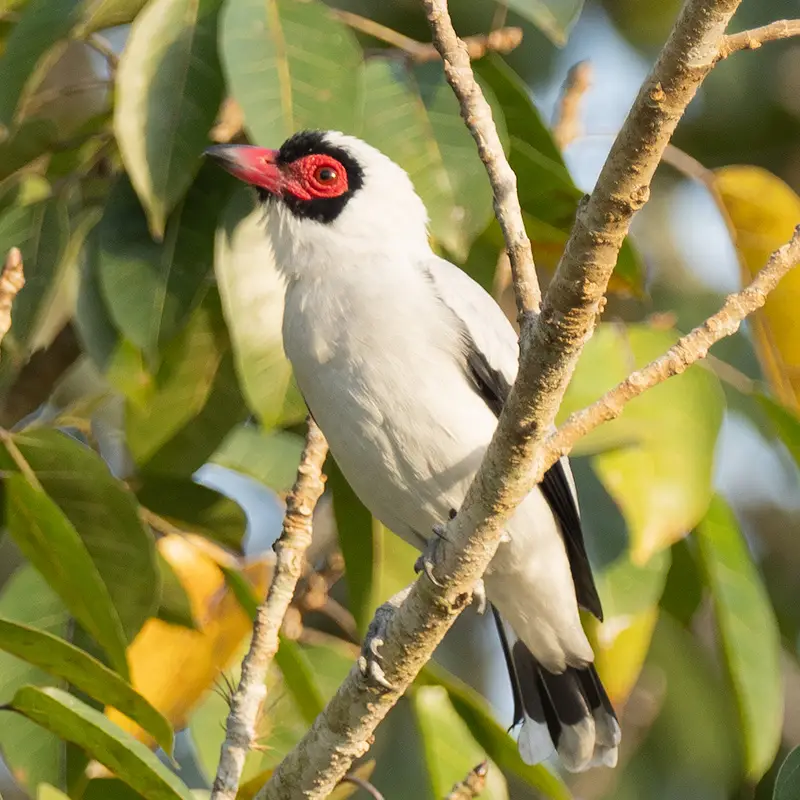
The whole of 23 February was spent on a second trip to the excellent Pipeline Road to the north of the Canopy Tower. With more time available, we were able to get much further along the road than on the 21st and so saw a good number of birds. We travelled to Pipeline Road on the ‘Birdmobile’, which was a open-topped truck with benches used to visit more local sites.
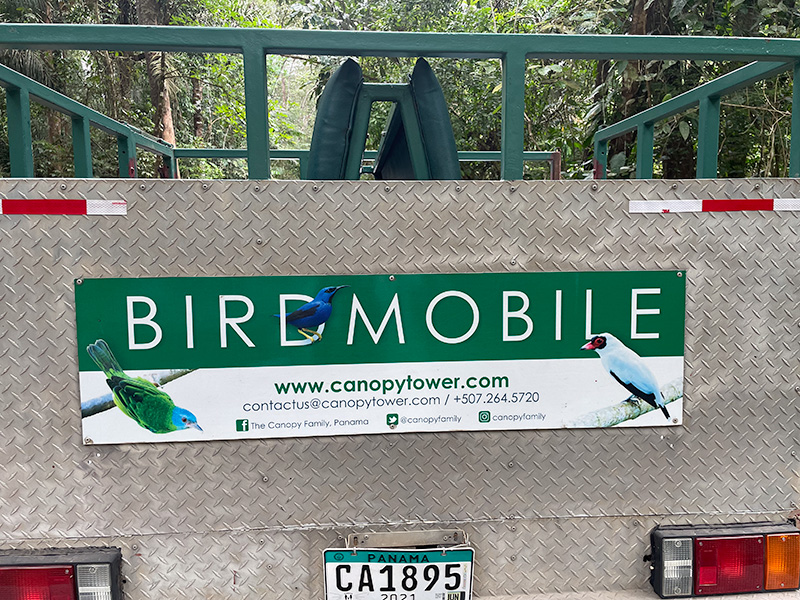

We arrived just before 7:30 and soon saw a male White-whiskered Puffbird, a Whooping Motmot and a White-collared Puffbirds in the trees, while a Great Tinamou crossed the road in front of us. A Green Shrike-vireo was well camouflaged against the green leaves.
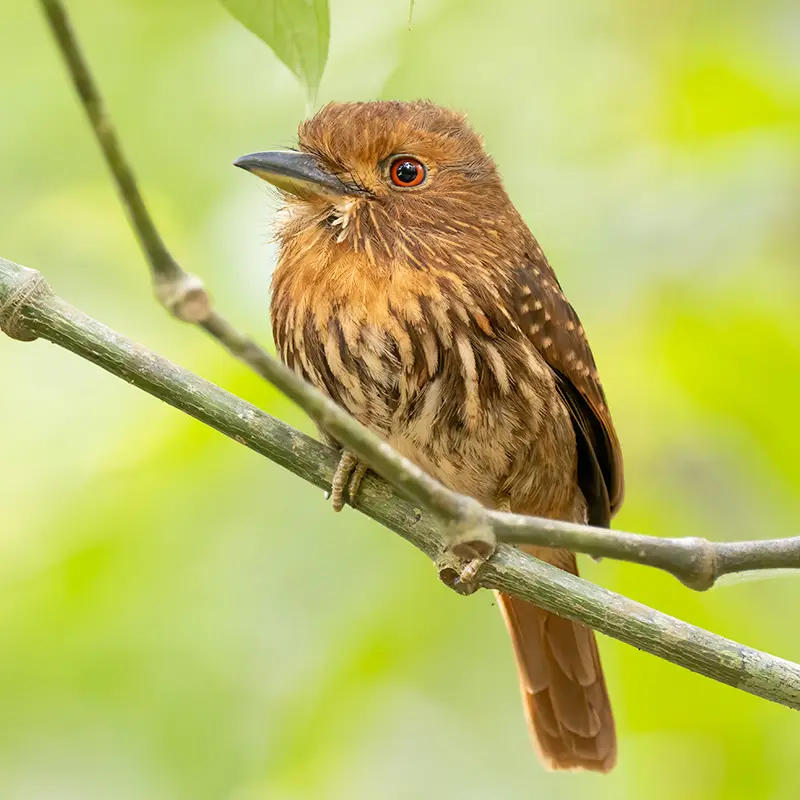
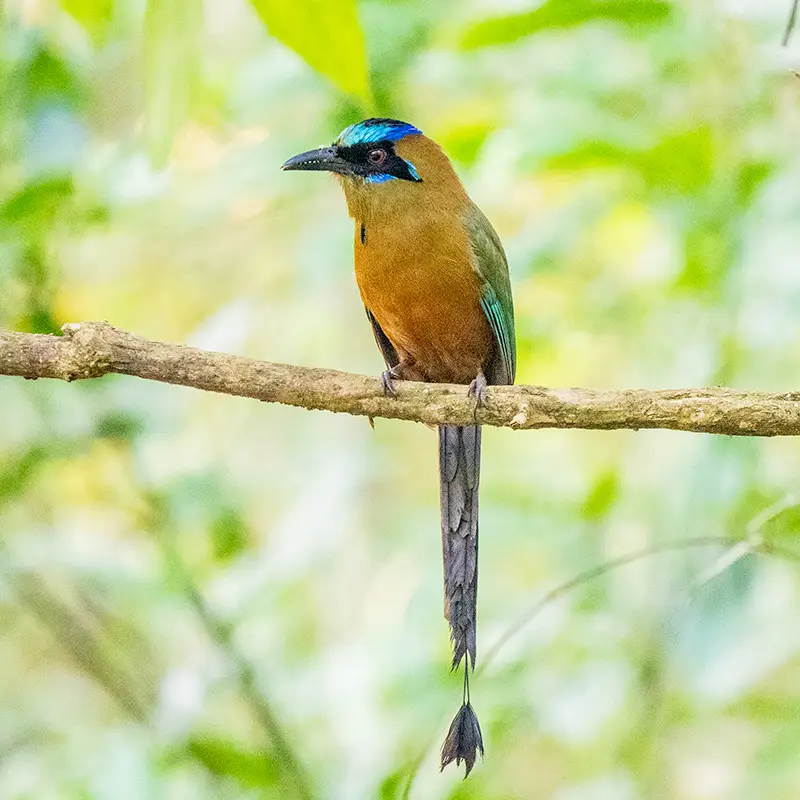
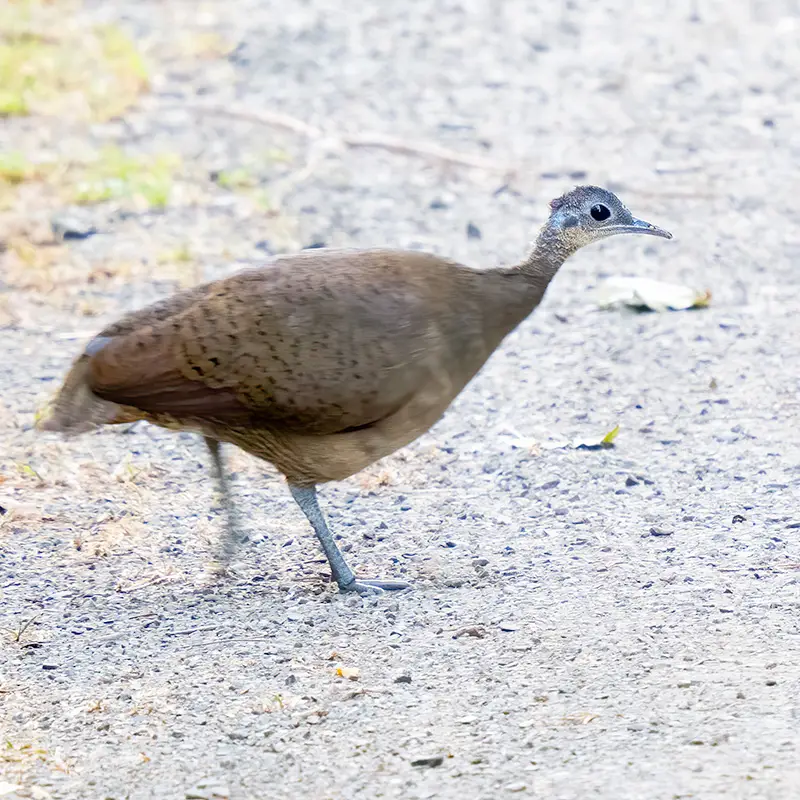
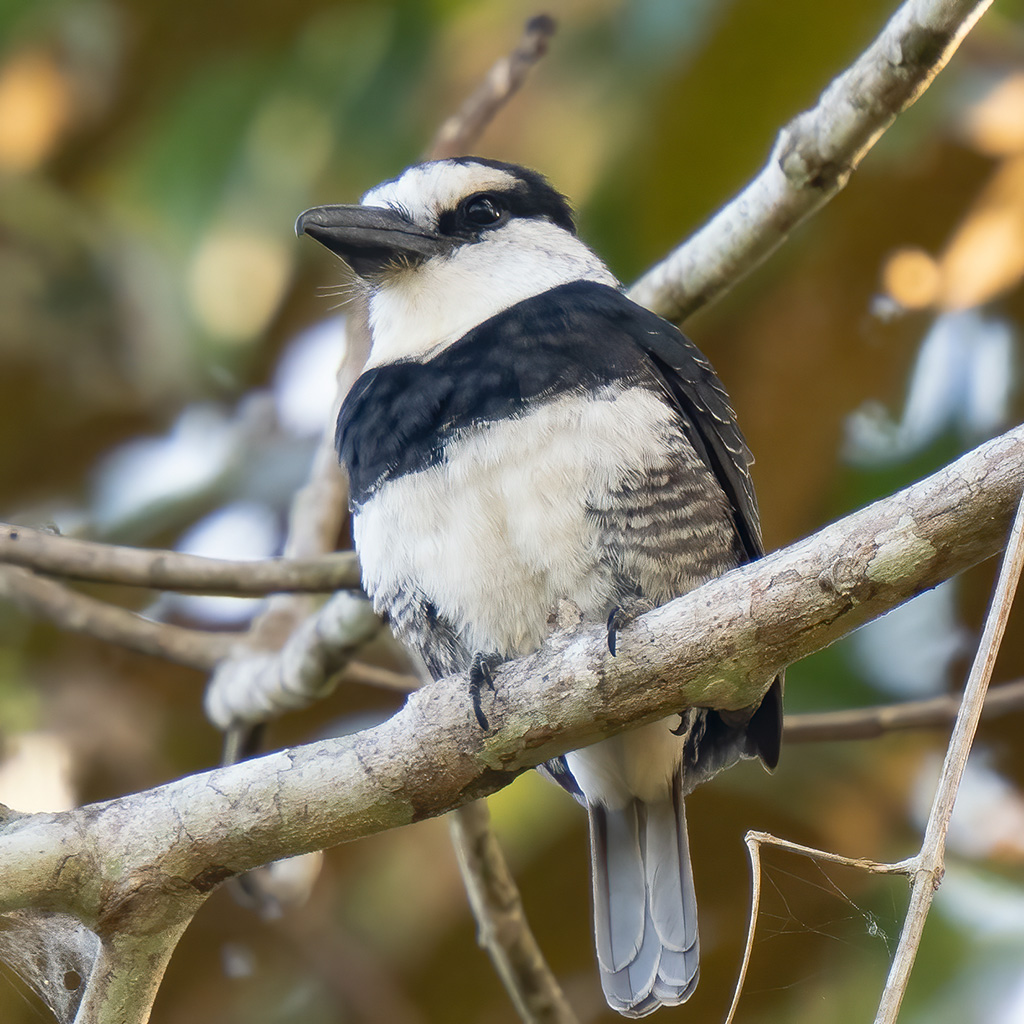
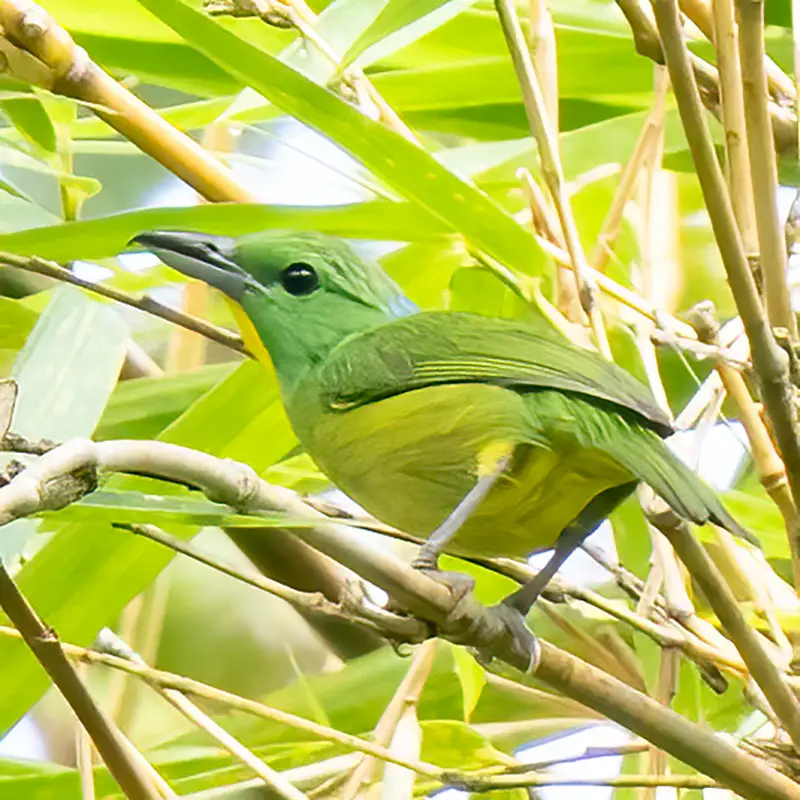
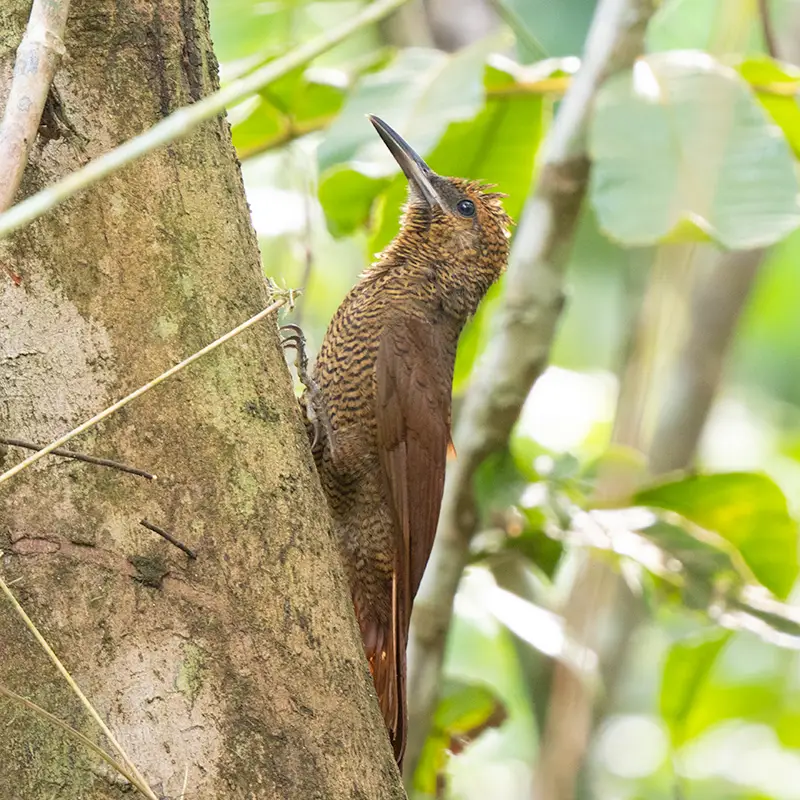
A highlight of the day was seeing a Streak-chested Antpitta, a species found from Honduras to coastal Ecuador. We saw the antpitta catch a small lizard, although it didn’t pose very well with its catch.


As we were out for the whole day we had an picnic lunch beside the trail that had been prepared by the staff of the Canopy Tower.
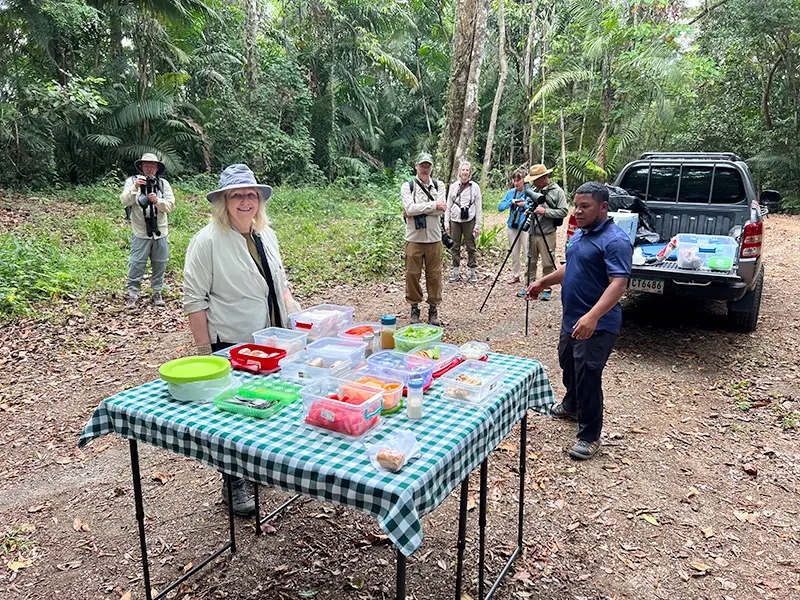
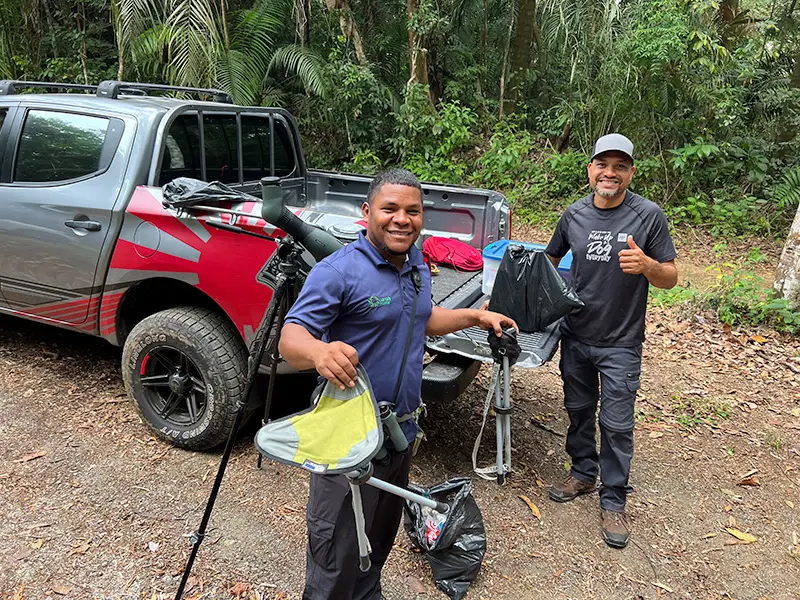
As on our previous trip to Pipeline Road, we saw an ant-swarth that was drawing in many birds, including Bicoloured Antbird, Song Wren and Ocellated Antbird.
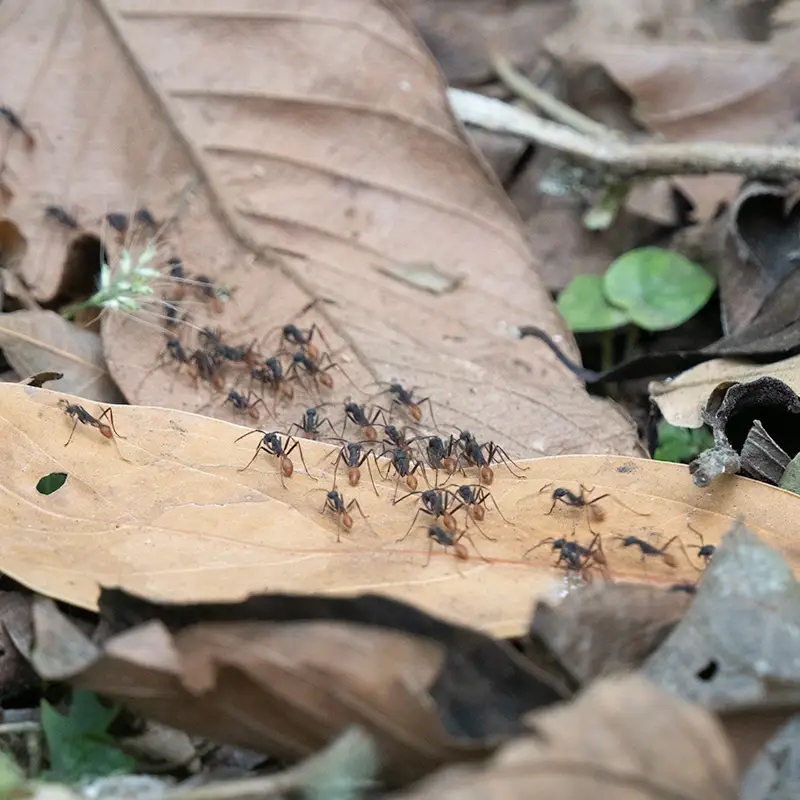
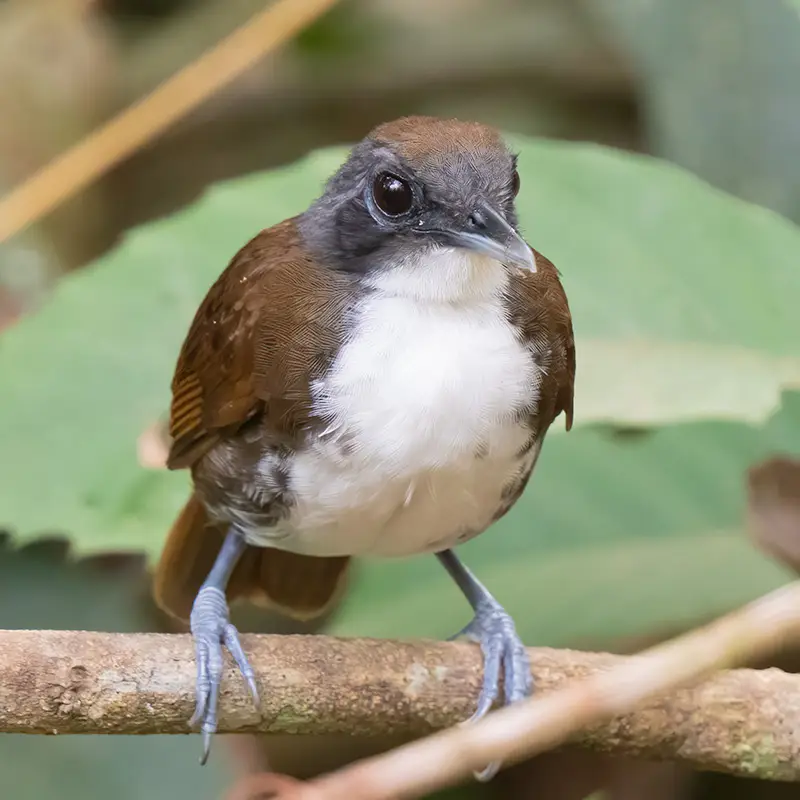
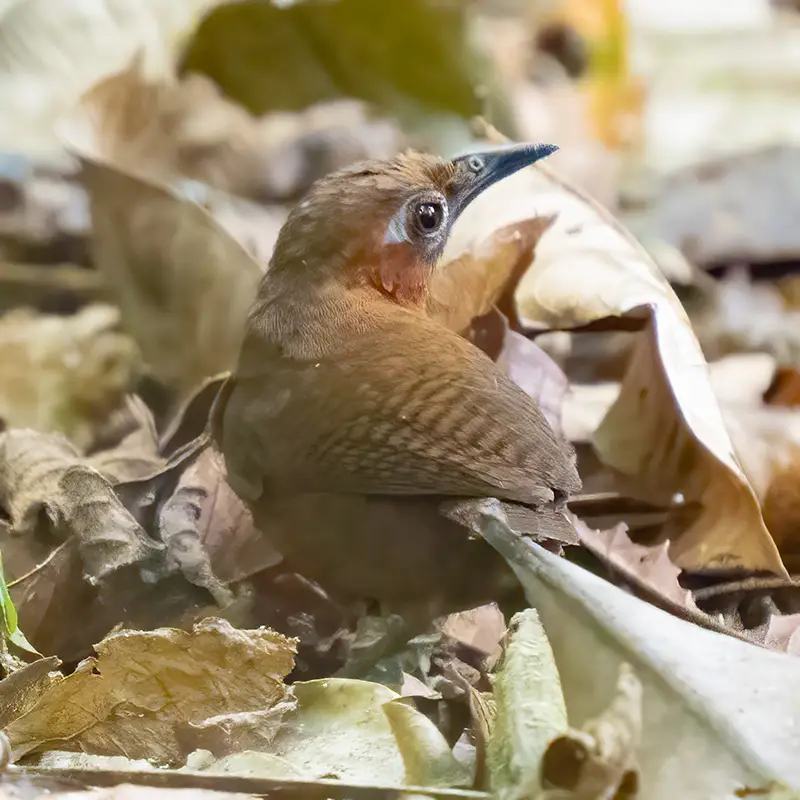

In such a forested area it wasn’t surprising that we saw so many woodcreepers, with Black-striped, Plain Brown and Northern Barred all being seen along Pipeline Road.


Before breakfast on 24 February we did our usual birding from the top of the tower while having a cup of tea and had good views of Mealy Parrot and Black-cheeked Woodpecker.
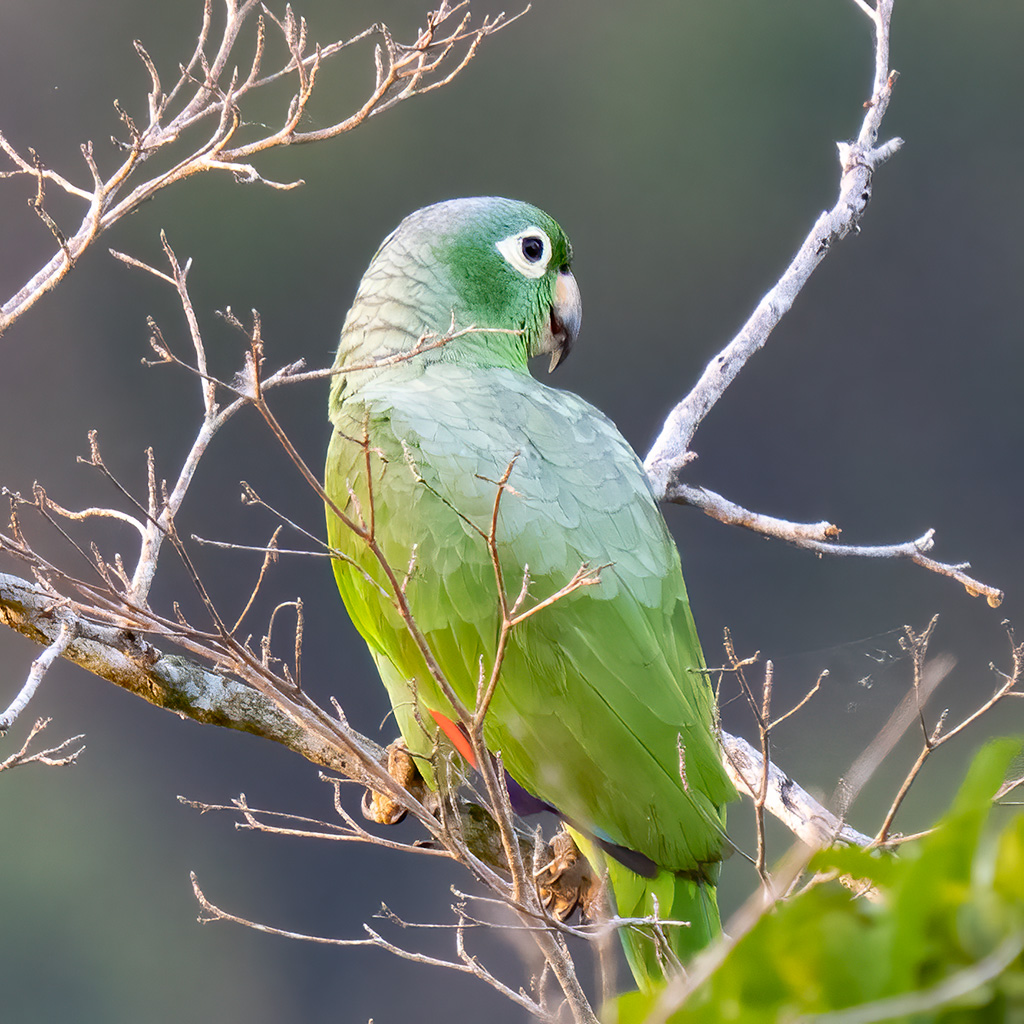

On the morning of 24 February we travelled further afield to the Metropolitan Natural Park on the outskirts of Panama City (‘F’ on the map). This was too far to take the Birdmobile so we used a very comfortable van.
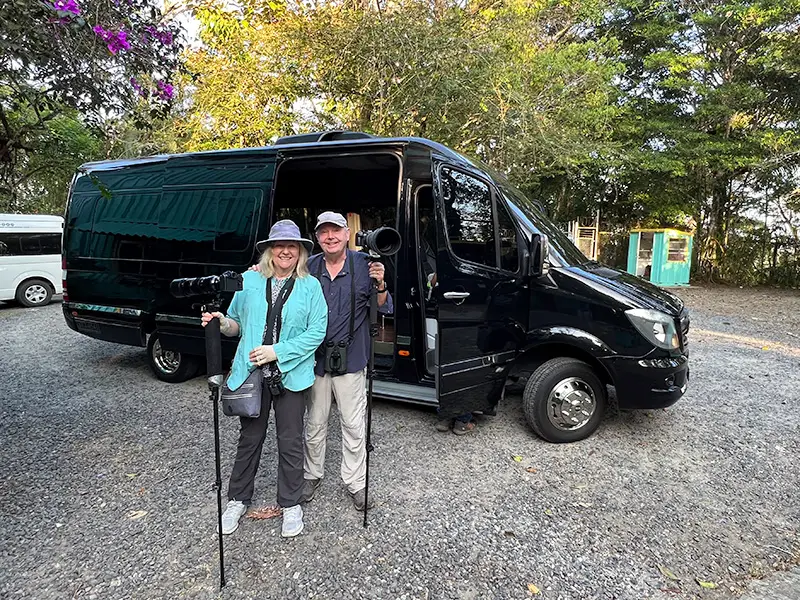
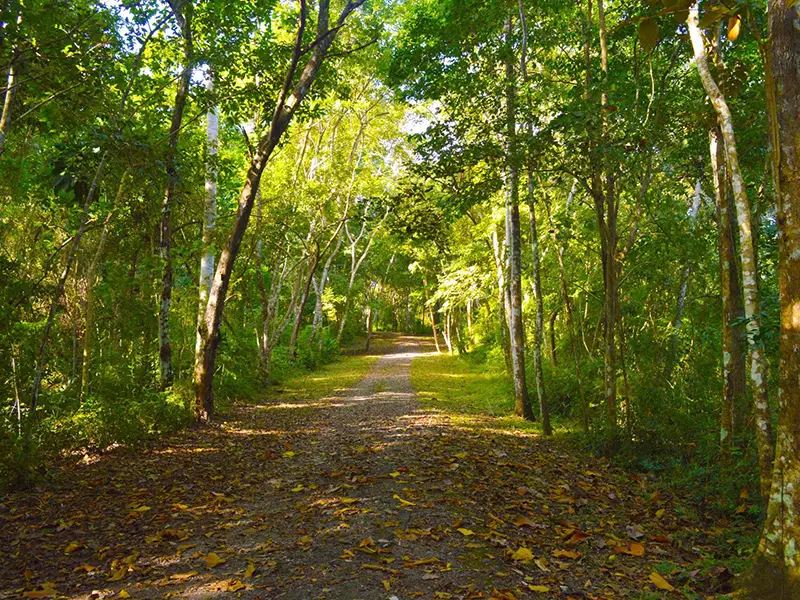
The park has a number of trails that wind through woodland and, for a site so close to a major city, the park had a very good selection of birds. A early sighting was a Great Kiskadee, soon followed by a Greenish Elaenia. Two birds we saw were lifers, the Forest Elaenia and Golden-fronted Greenlet, although both were rather distant.
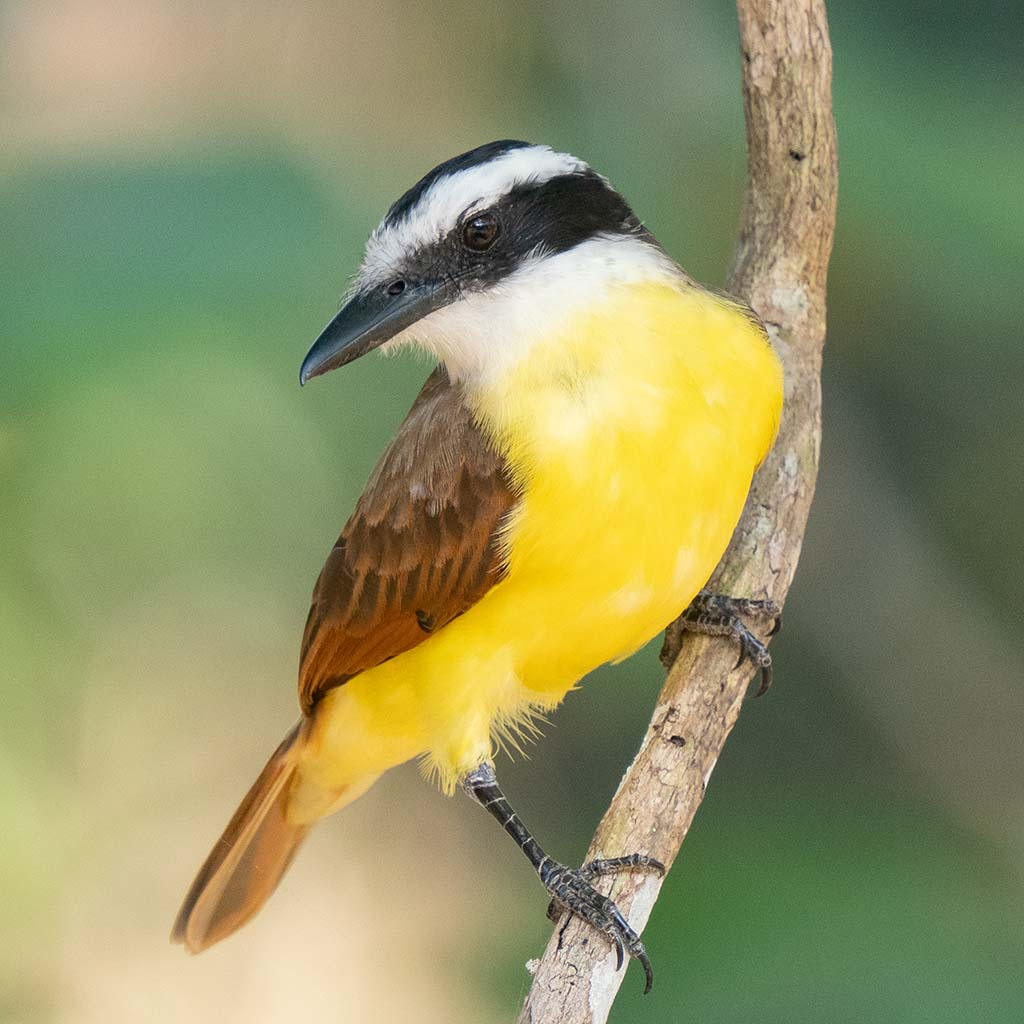
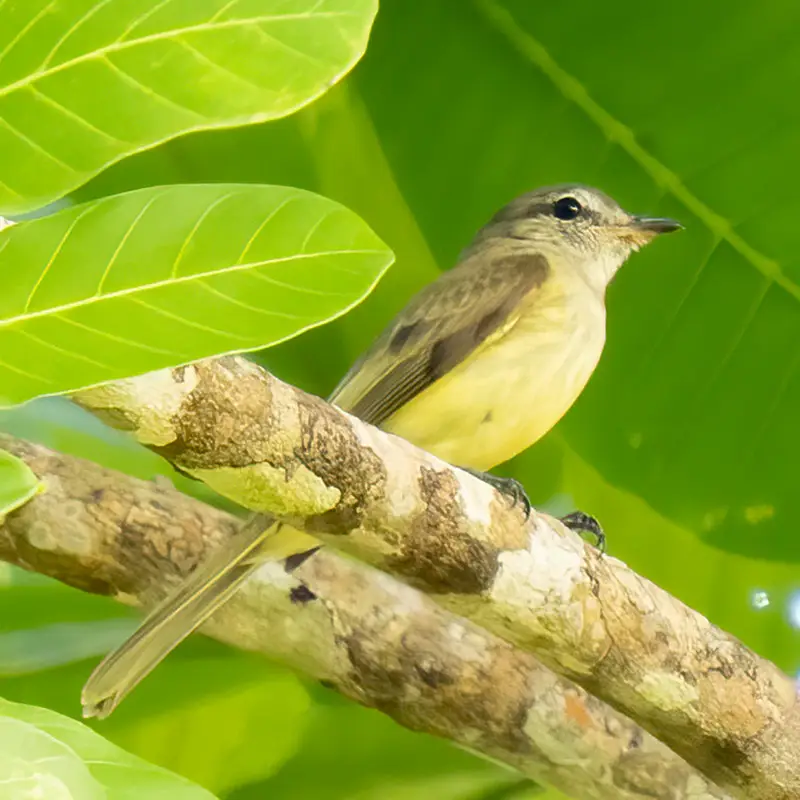
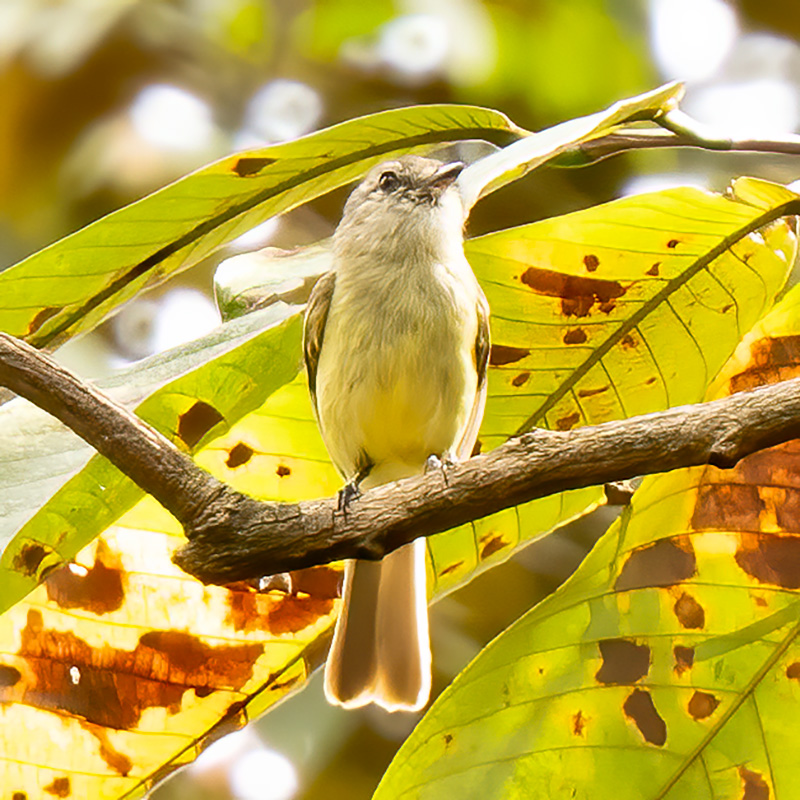
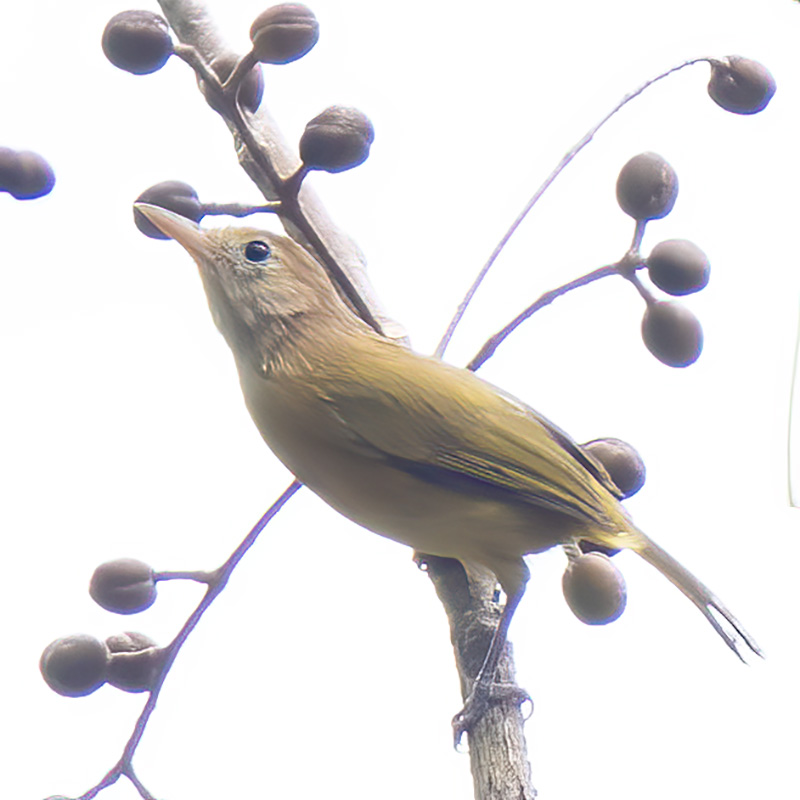
One of the most attractive birds of the morning was a Lance-tailed Manakin, a species found only in Central America and northern Venezuela. We also saw Variable Seedeater, Yellow-backed Oriole, Squirrel Cuckoo and Ruddy-tailed Flycatcher.
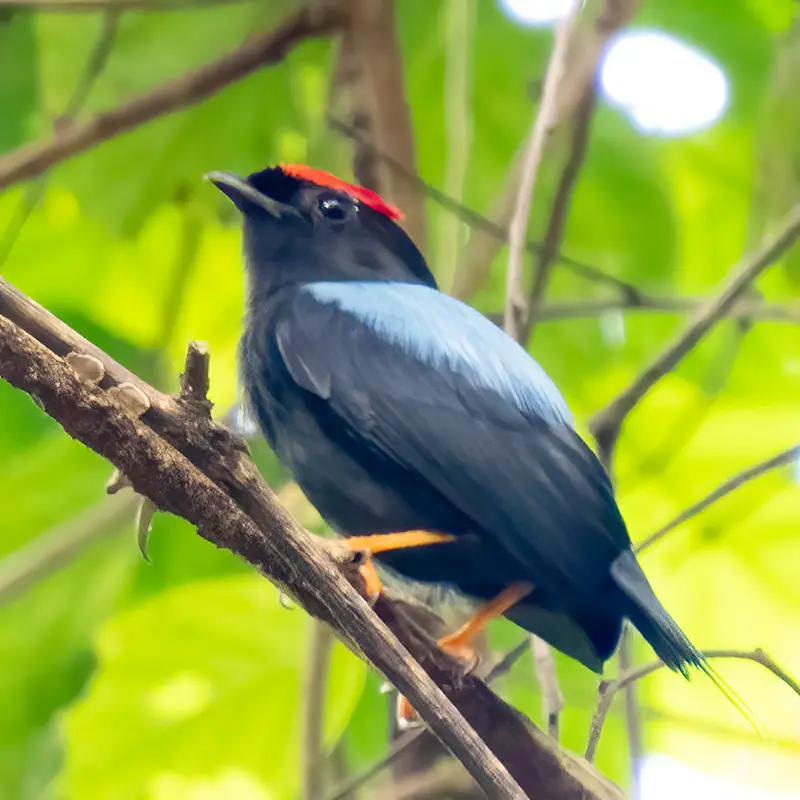
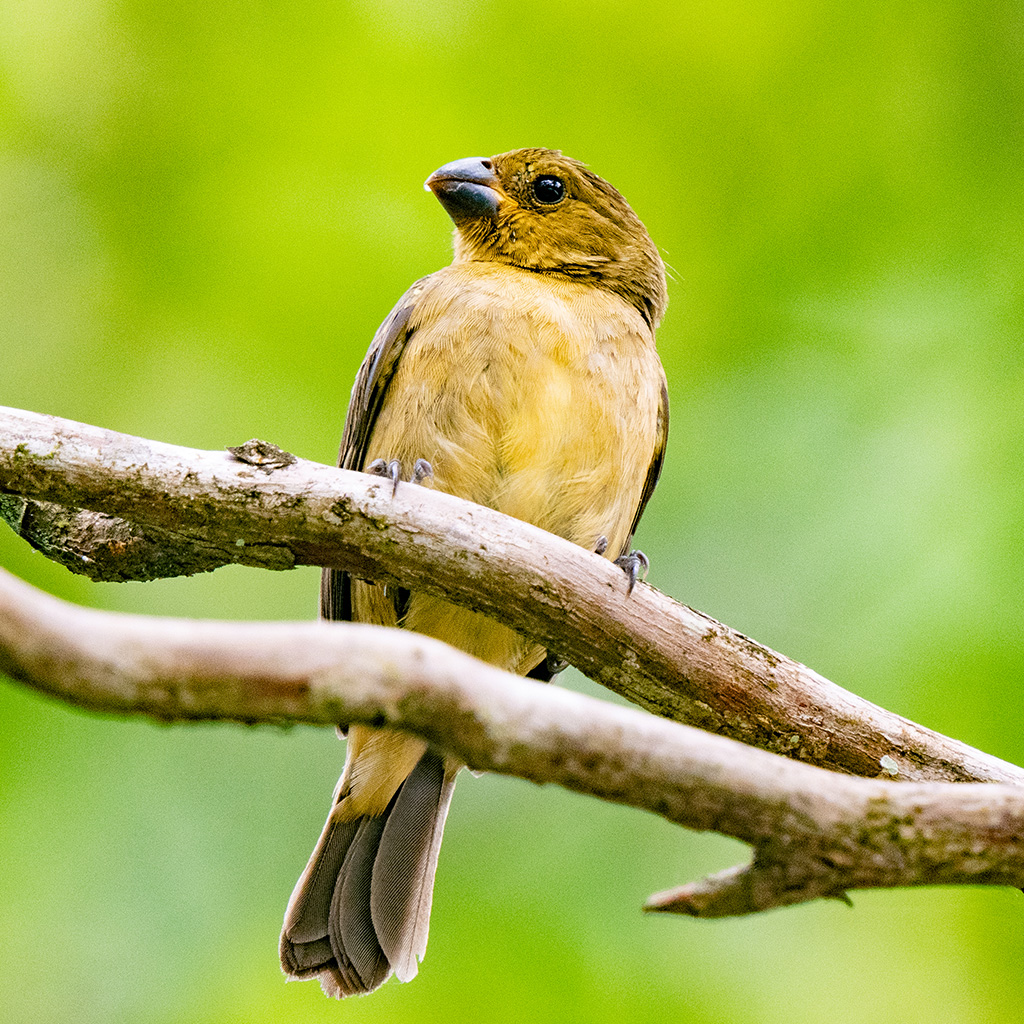
After lunch back at the Canopy Tower we visited Summit Ponds, a forested area just south of the main Panama City – Panama Canal road and close to the State Border Service centre (‘G’ on the map). The trails wind around the ponds and you can see both forest and water birds. Beside one of the ponds we saw an Amazon Kingfisher, which was another lifer for us.
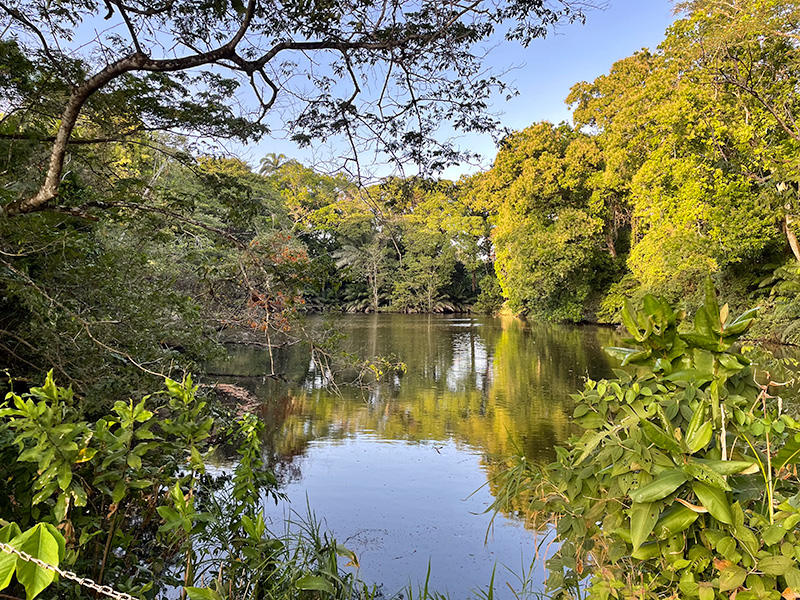

Good birds we saw at the Summit Ponds included Olivaceous Piculet, Gartered Trogon and Yellow-olive Flycatcher.

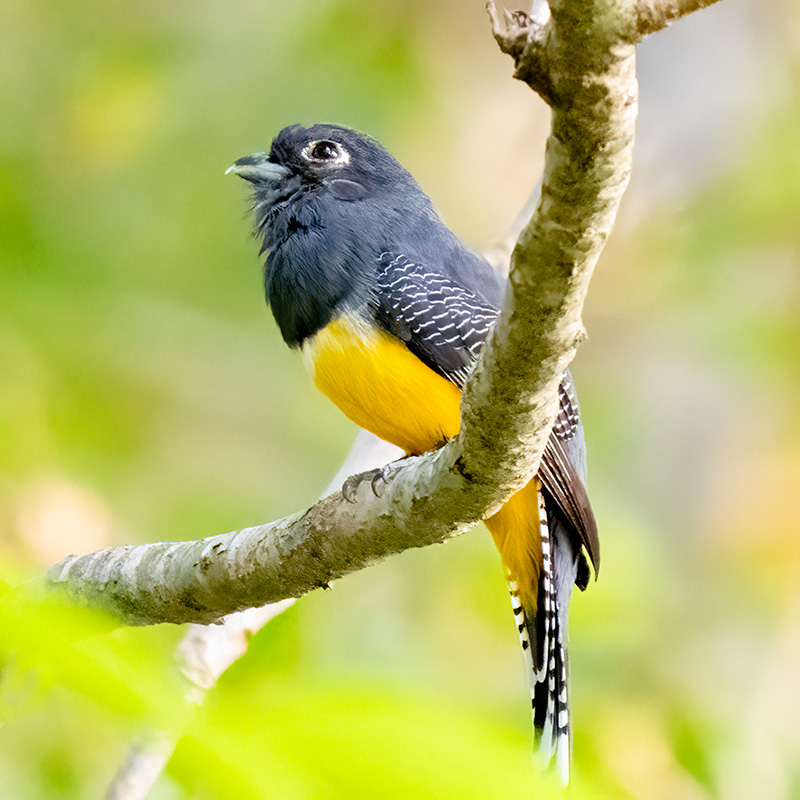
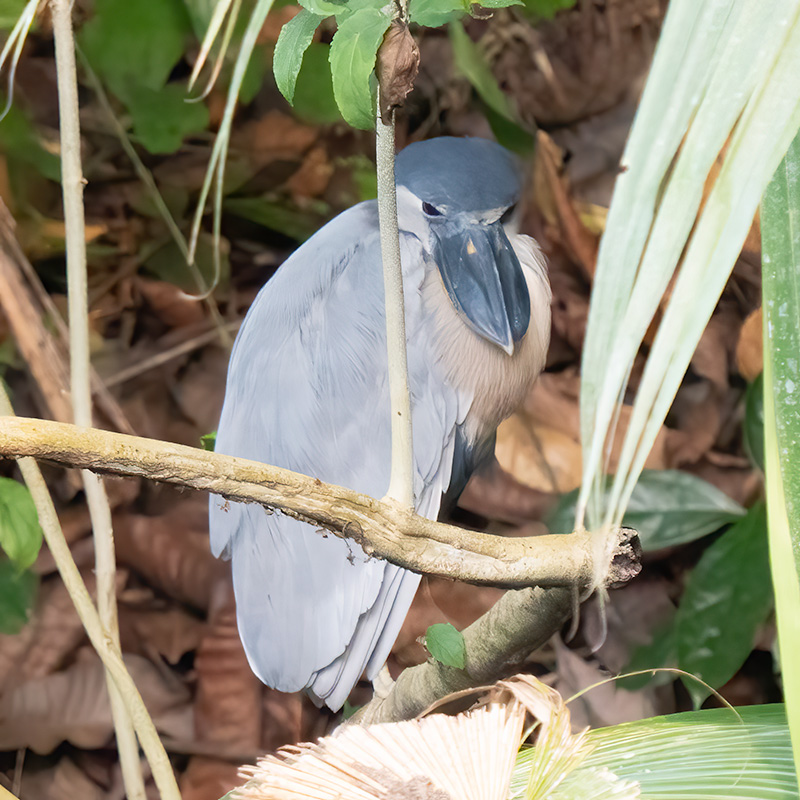
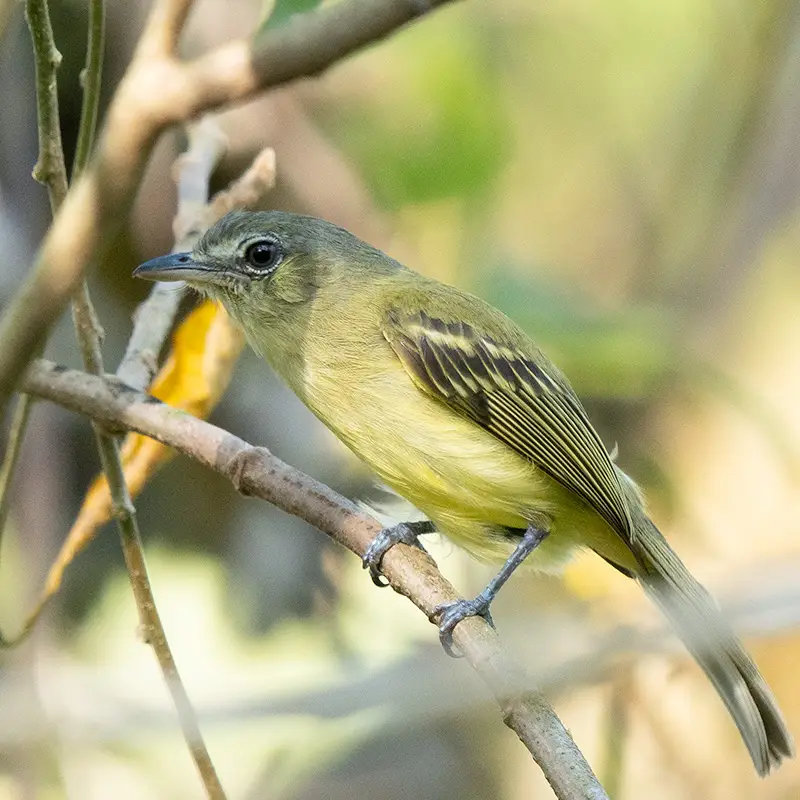
The 25th of February was the final day of our trip and we spent it at our most distant location, the Cerro Azul Mountains to the northeast of Canopy Tower (‘H’ on the map).
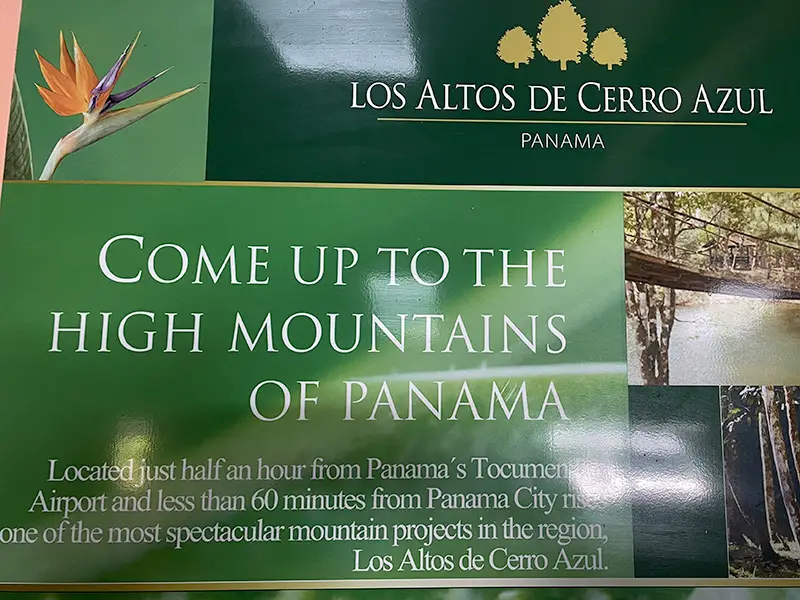
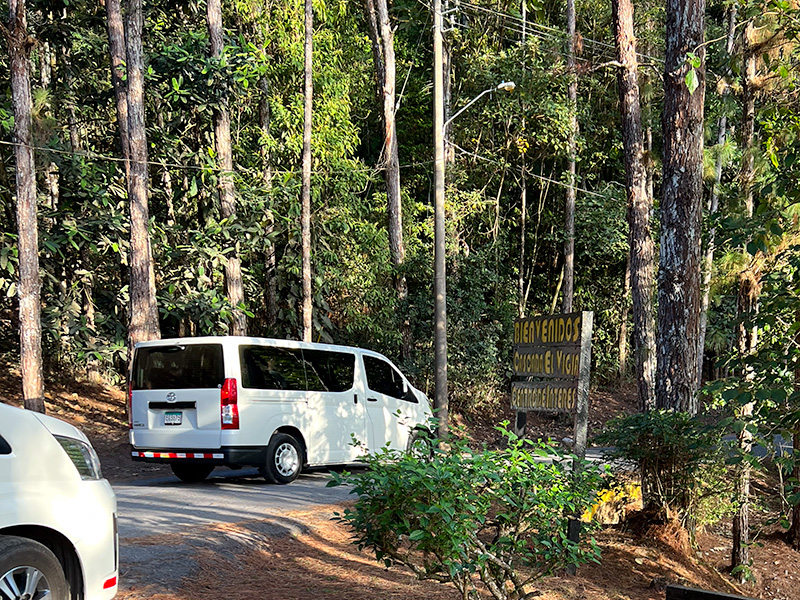
We set off early from Canopy Tower and by 7 AM were birding in a layby in the mountains. Our first target bird was the Carmiol’s Tanager, which our guide soon found near the road. We then heading up to higher elevations and began walking the trails. Soon we found the small Scale-crested Pygmy-tyrant conveniently perching on a low bush, while a striking Yellow-faced Grassquit and Emerald Tanager were nearby.
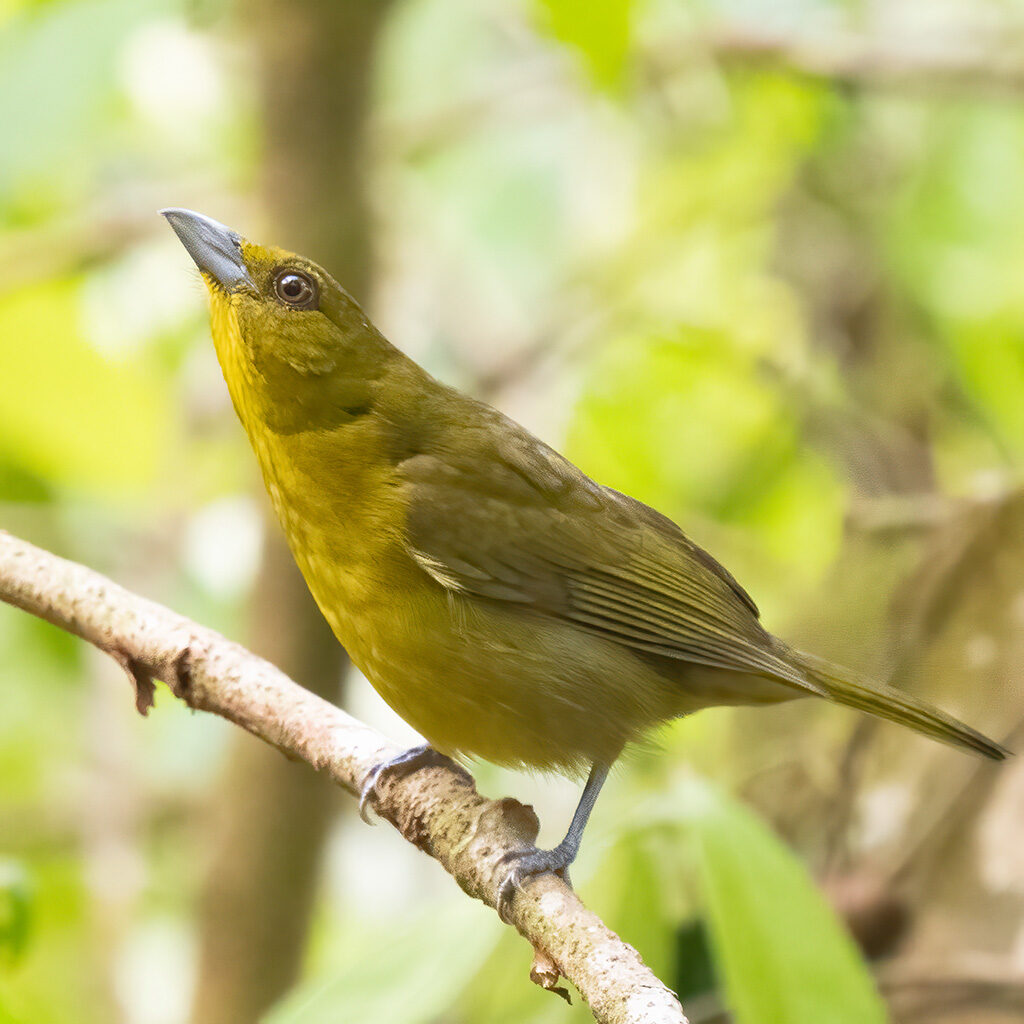
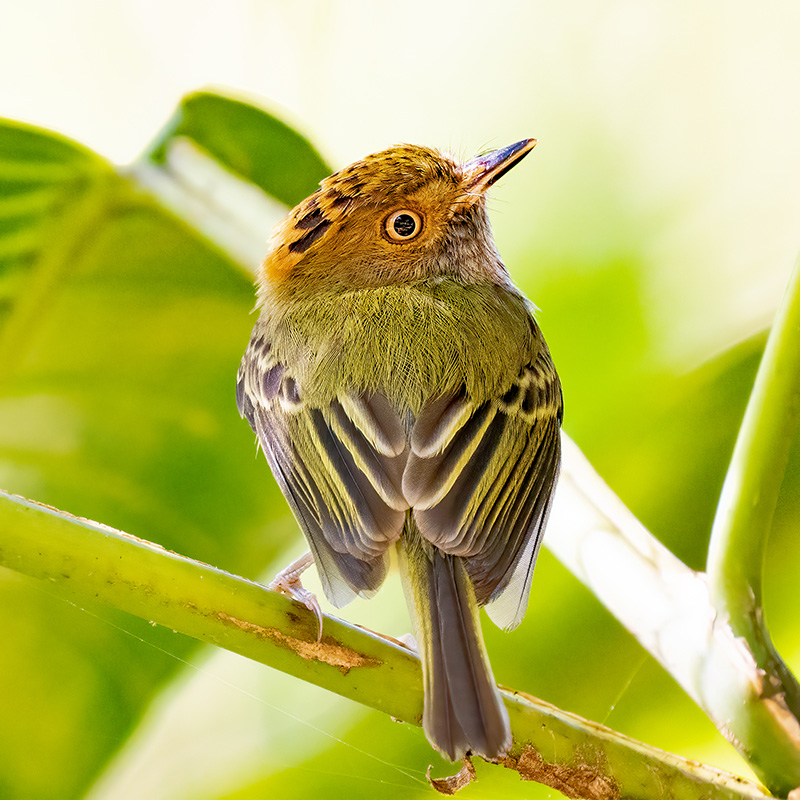
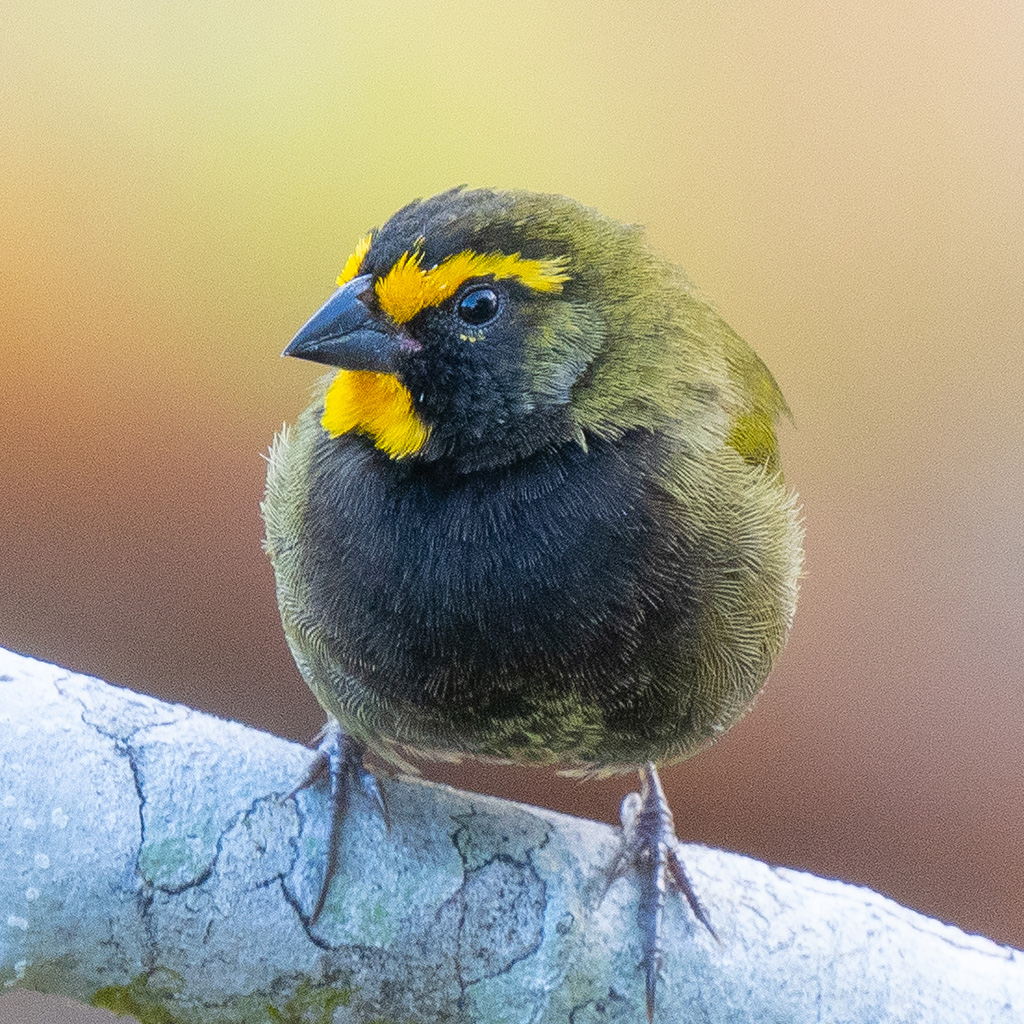
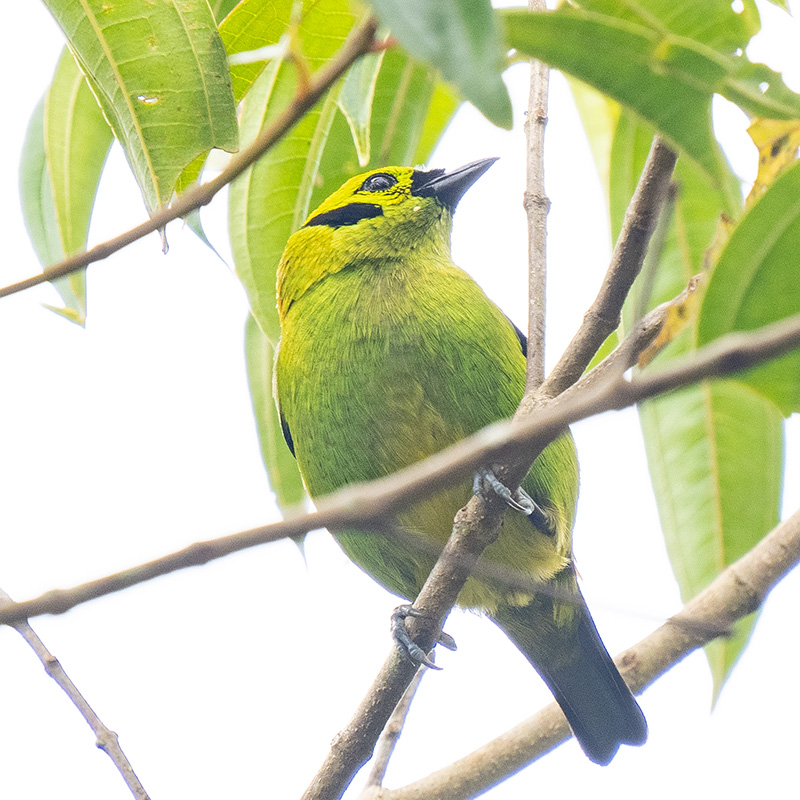
Mid-morning we came across one of the top birds of the trip, the Stripe-cheeked Woodpecker, which is endemic to Panama. The bird was quite deep in a copse so it was difficult to get a good photograph but at least we can see the white stripe across its cheek.
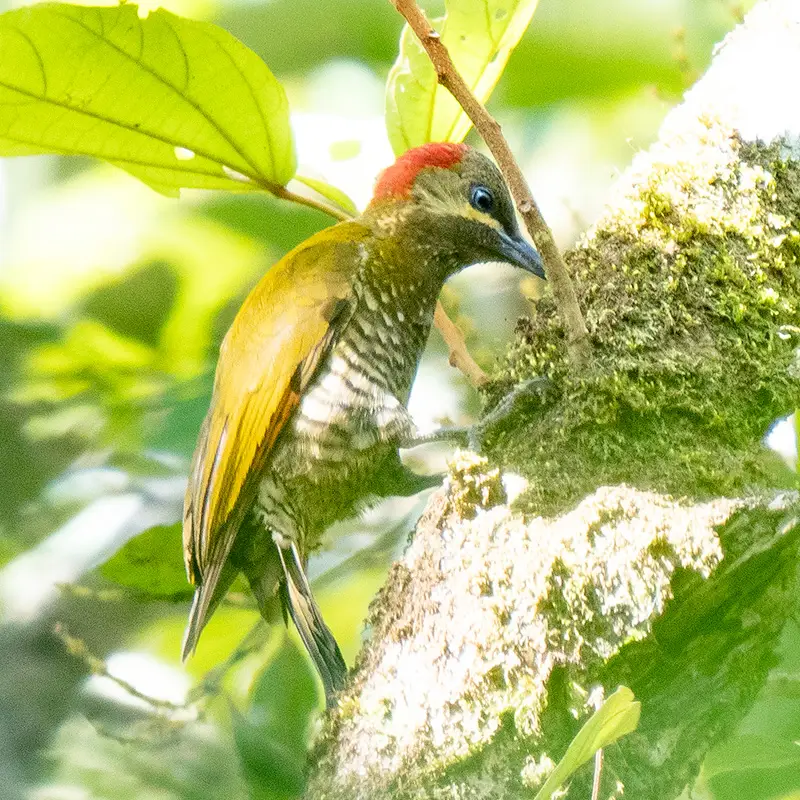
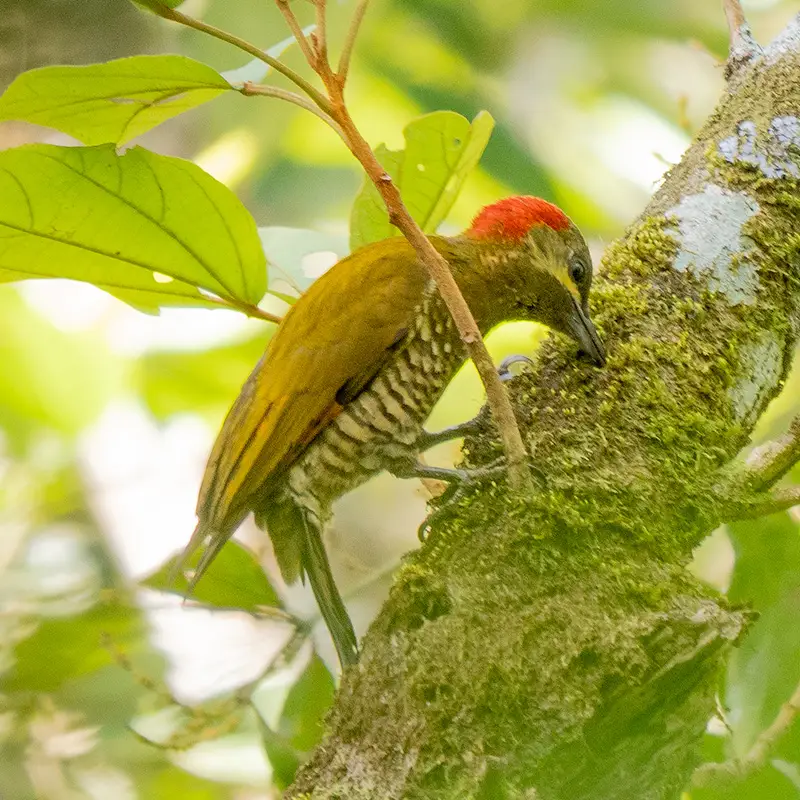
After the excitement of seeing the Stripe-cheeked Woodpecker we saw other good birds in the late morning, including White-vented Euphonia, Black-and-yellow Tanager, Squirrel Cuckoo, Russet Antshrike and Rufous-winged Tanager.

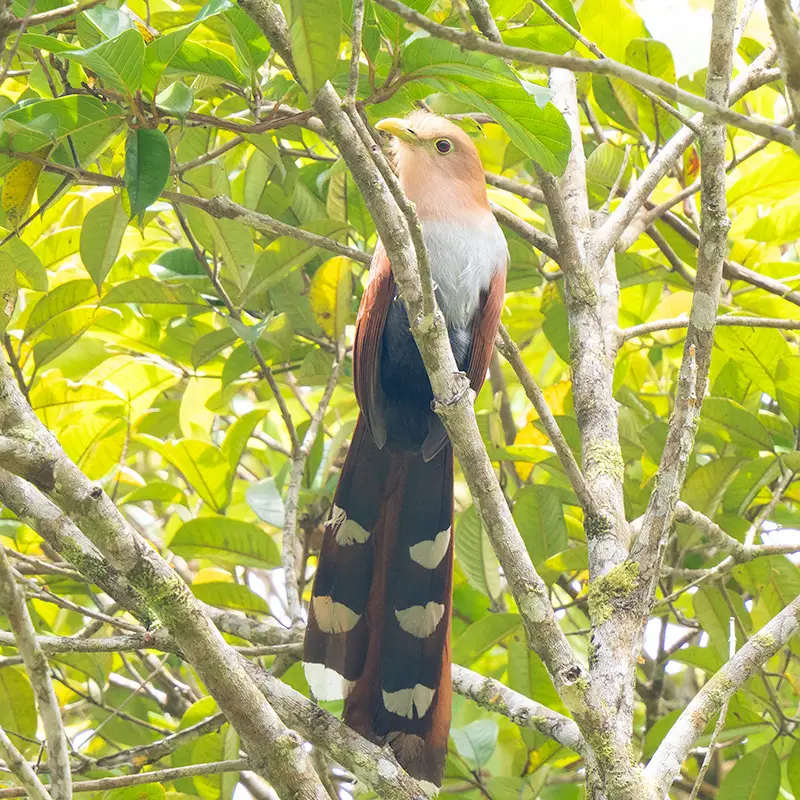
Just before lunch we stopped at a house that has a large number of hummingbird feeders that allows groups to visit and enjoy these beautiful birds. There were so many hummingbirds that it was difficult to stop taking photographs to have lunch. Species we saw were White-necked Jacobin, White-vented and Bronze-tailed Plumeleteer, Green Hermit, Snowy-bellied Hummingbird, Blue-chested Hummingbird and Crowned Woodnymph.
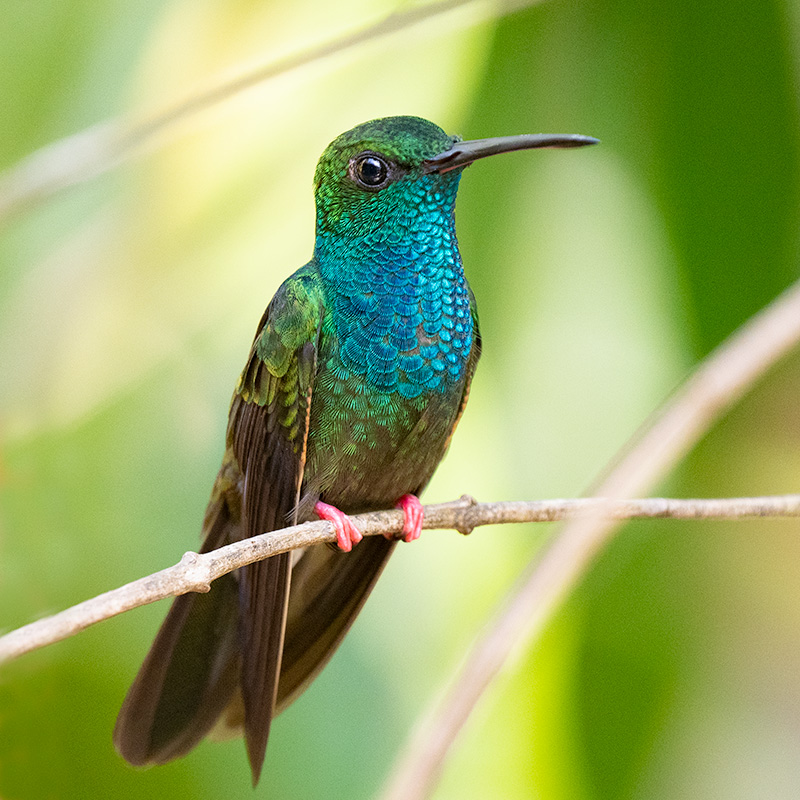
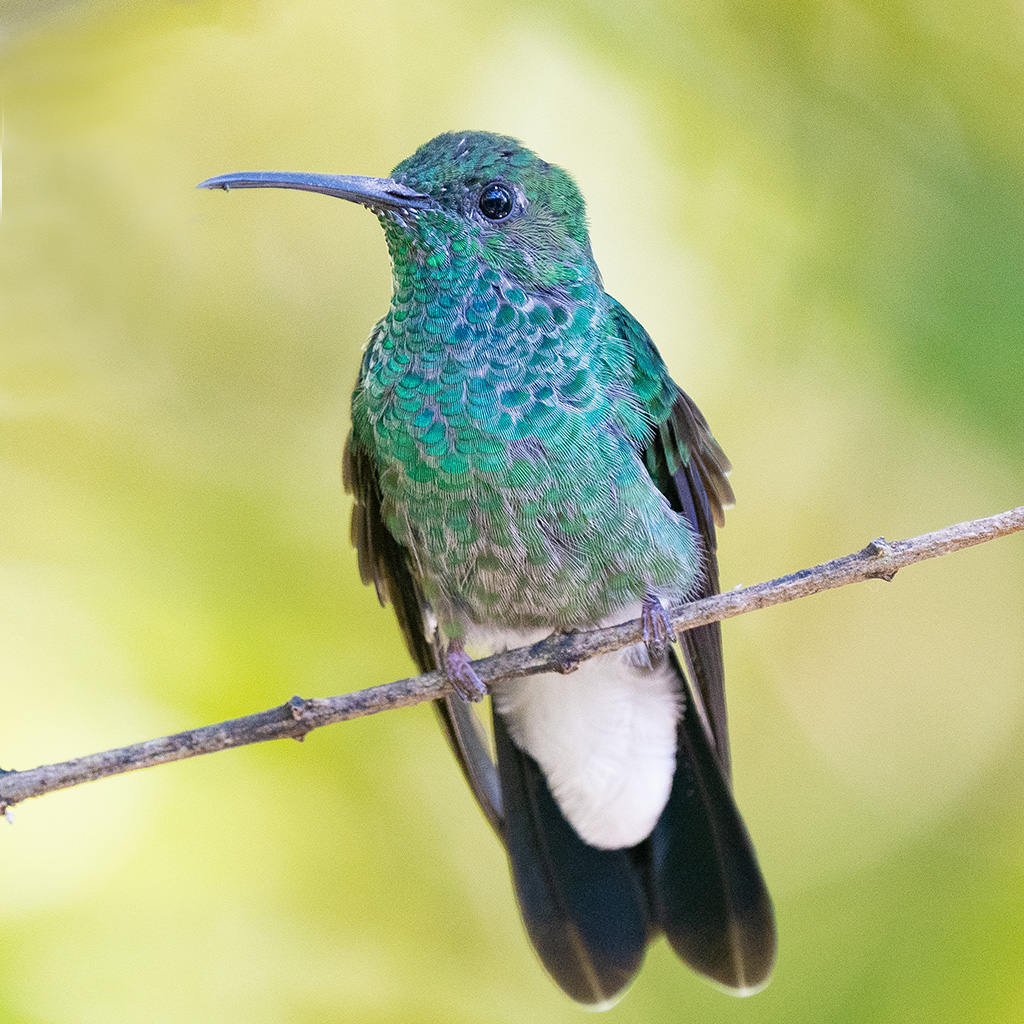
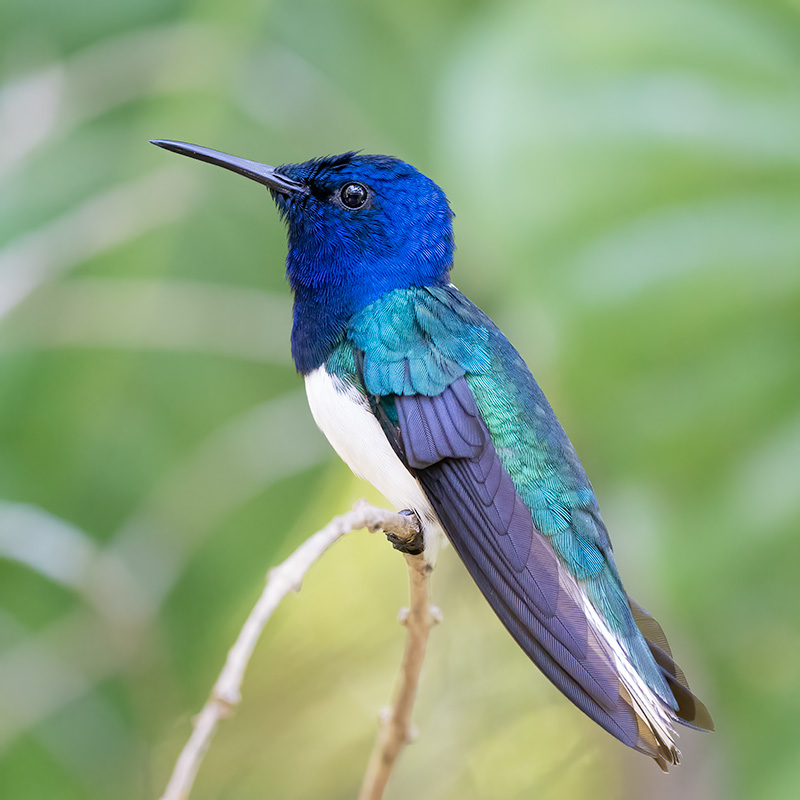

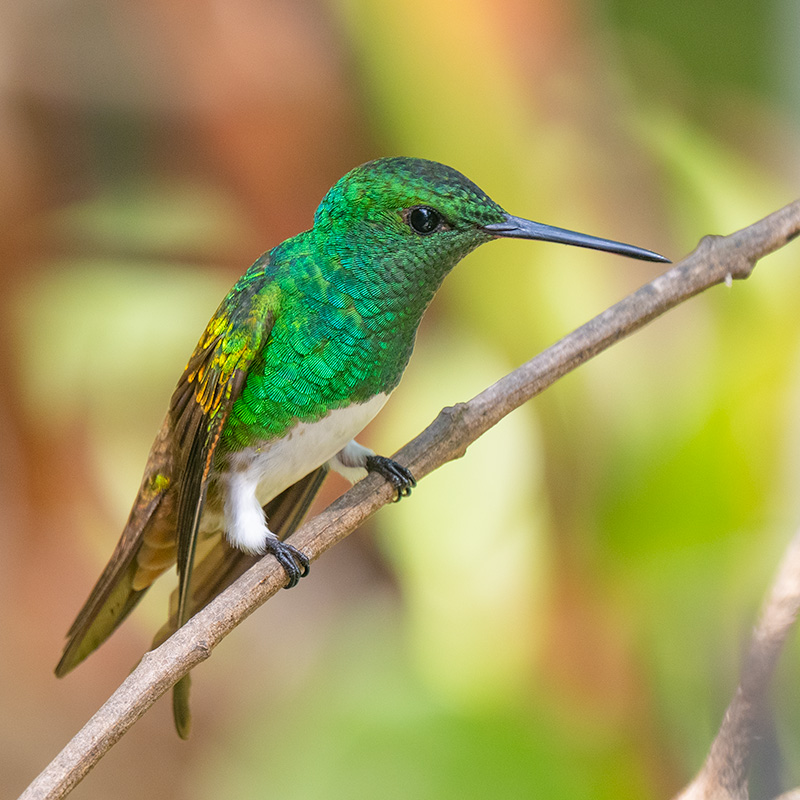

With so much food around a few other birds appeared in the garden, including Black-cheeked Woodpecker, Bay-headed Tanager and Shining and Red-legged Honeycreeper.
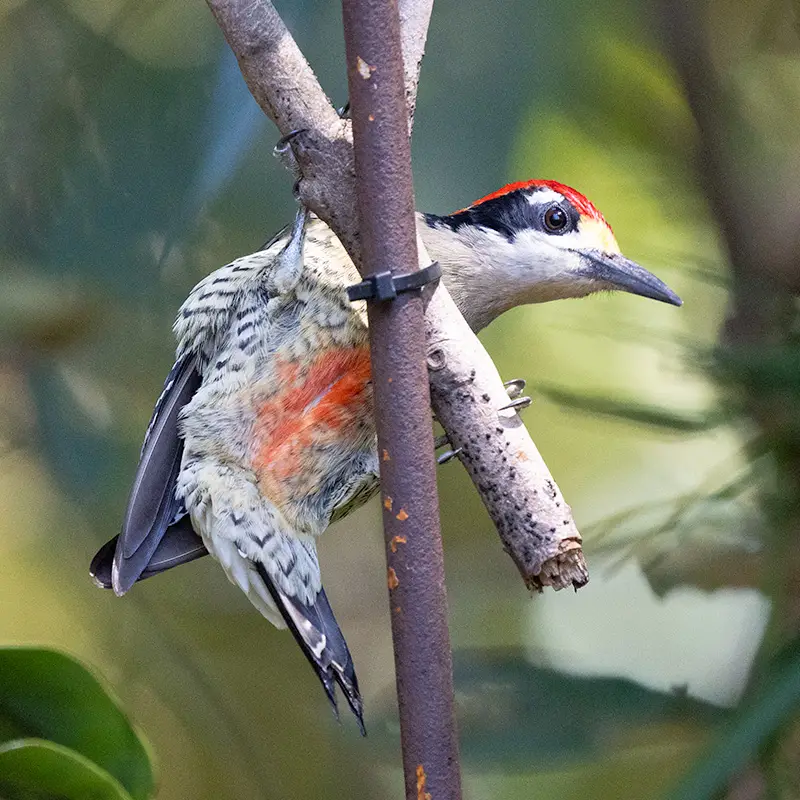
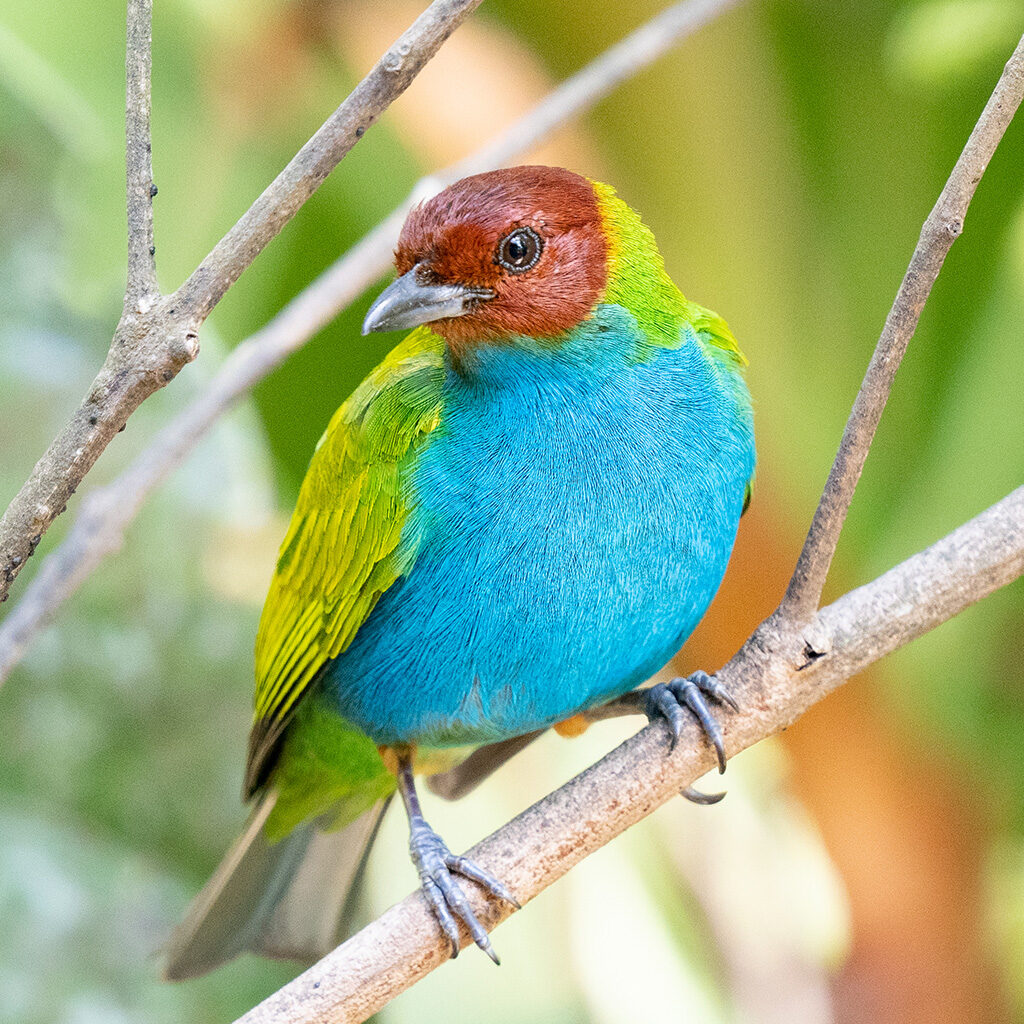
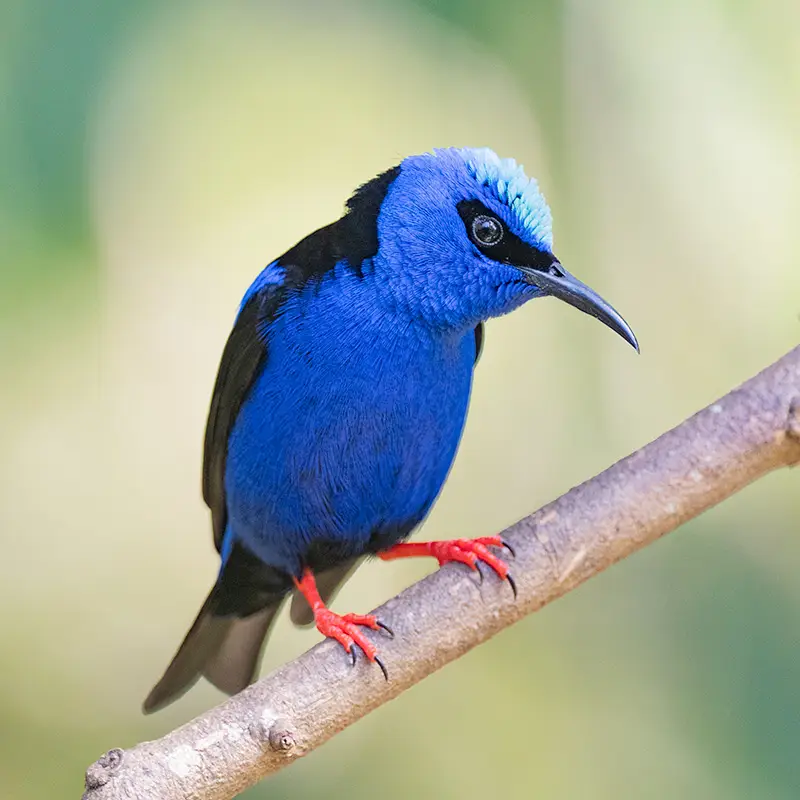
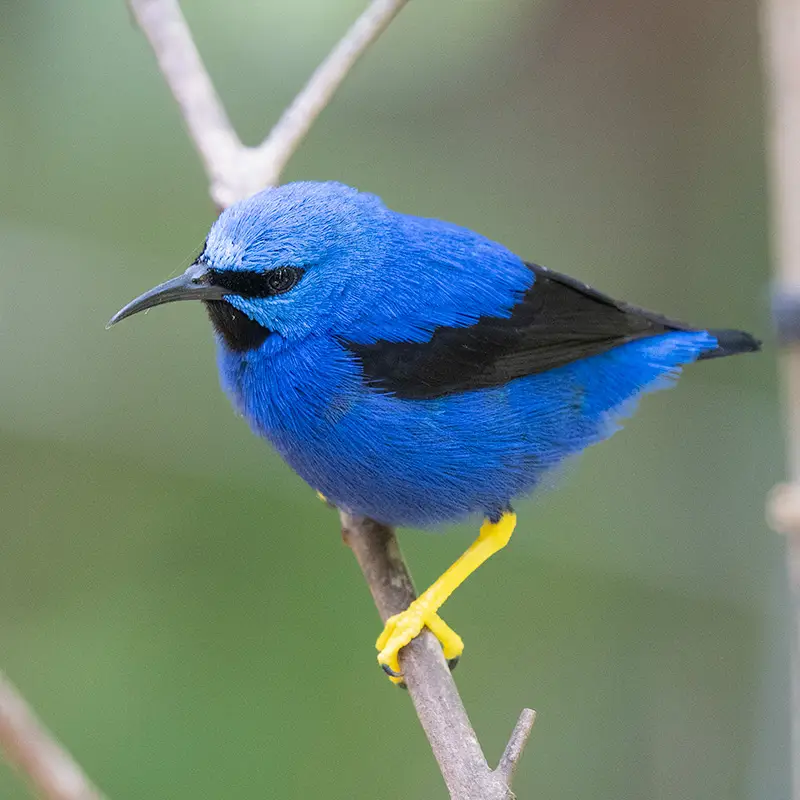
This was a wonderful last day of our trip to Panama with so many great birds and an outstanding final session in the hummingbird garden. The next day we left Panama with many happy memories and many thousands of photographs to sort!